The Generosity Of Ginger
This article provides info on how to grow Ginger (Zingiber officinale) in pots, exploring the many health benefits of ginger and offering some recipe ideas to enjoy your future harvests
Ginger is a medicinal powerhouse and culinary extraordinaire that is a must have in your natural first aid kit and kitchen pantry.
In the article that follows I will provide practical info on how to grow your own ginger at home (regardless of your living situation), also providing a list of the myriad medicinal benefits offered when you include ginger in your diet (with extensive references) and in addition I share some recipe ideas for enjoying this medicinal superfood in meals and preserves.
With increasing concerns about the instability of global food supply chains, the obscene increases to the cost of food in stores, concerns about weaponized pathogens being released (and many wanting to start a garden but feeling disheartened as they do not have access to any land to grow food/medicine) I felt compelled to offer this article to help empower people to be able to be proactive and take steps towards food and health sovereignty (regardless of one’s living situation and the time of year).
This is one of my favorite crops for a number of reasons. It opens up vast potential for culinary creativity, can be used to optimize the function of the innate immune system, fine tune cognitive function, relieve almost any digestive issues and you can even use fresh (or dried) ginger rhizome topically as a dressing for open wounds (due to its anti-microbial and anti-fungal properties) it makes for an excellent antiseptic addition to a poultice or salve.
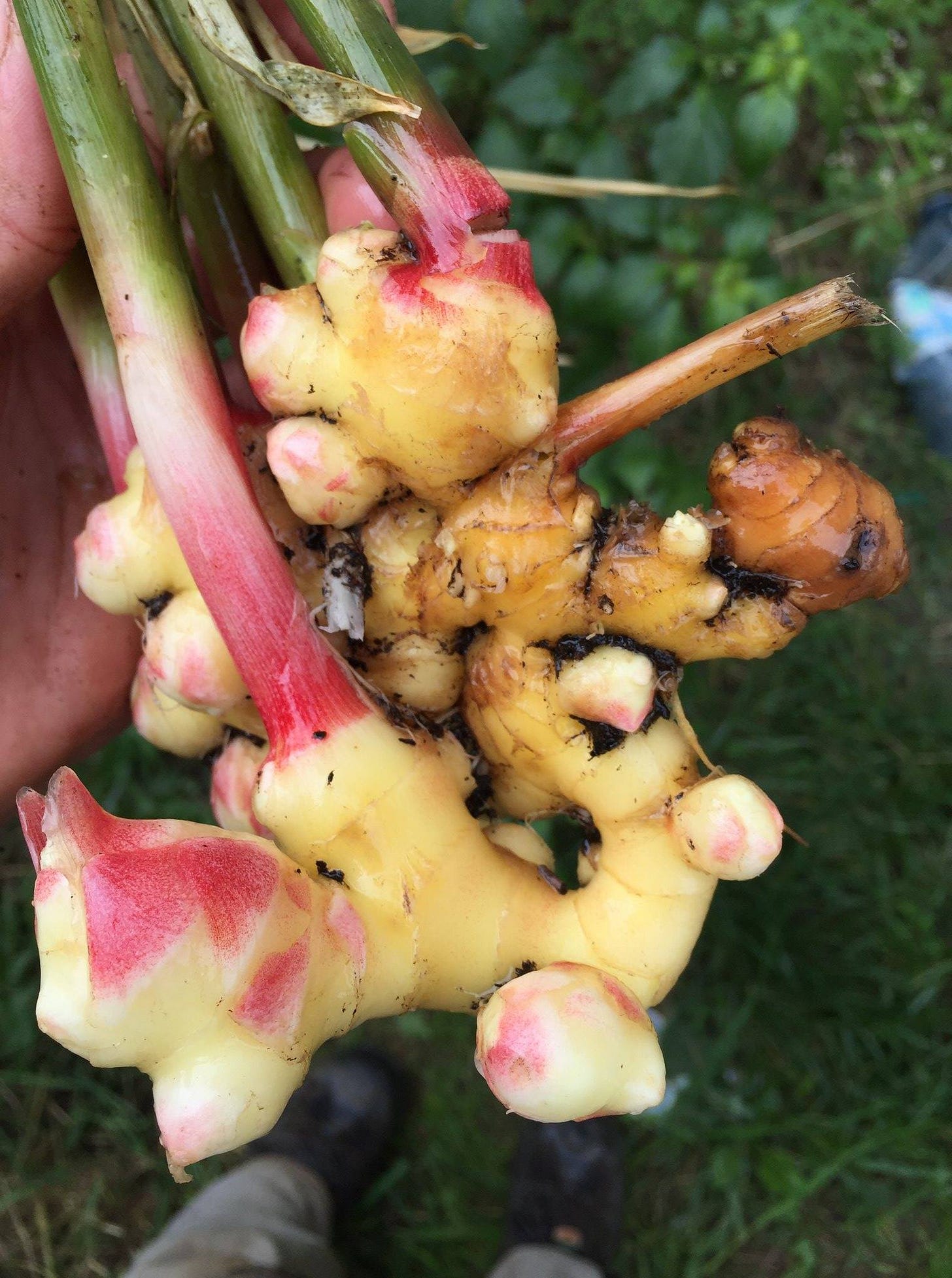
Enter Homegrown Ginger (Zingiber officinale)
Almost anyone (with a south facing window) can grow this amazing super food and medicinal plant in their home and/or garden. Zingiber officinale is a subtropical plant which can be grown in a pot started from a section of rhizome (known as ginger root in grocery stores). Not only does this plant bring aesthetic beauty to your home but once it is done gracing your home, you can turn the pot over and nourish your body with its rhizomes as was common in ancient Chinese medicine.
Ginger makes for a beautiful houseplant (which you can start at any time of the year) with its sleek tropical looking foliage and can be grown in containers for easy moving/harvesting.
If you live in zone 5 or warmer you can also bring your potted ginger plants outside to take advantage of the summer heat by placing them on a balcony or in your garden to boost your harvest yield.
Before we get into the nitty gritty of how to take a section of organic ginger “root” (actually a rhizome not a root) which you can get from most grocery stores and sprout it to begin to grow your own perpetual supply of homegrown ginger, lets briefly explore the history of ginger.
History of Ginger
The known history of ginger dates back about 5000 years. Ginger originated in maritime Southeast Asia and was likely domesticated first by the Austronesian peoples. It was transported with them throughout the Indo-Pacific during the Austronesian expansion around 5 millennia ago (reaching as far as Hawaii). Its medicinal and spiritual uses were first documented in Southeast Asia, India and China. It appeared in the records of the southern parts of the ancient China. From there, it’s cultivation and medicinal use spread to India, Maluku Islands (so-called Spice Islands), rest of the Asia and West Africa. Europe saw ginger for the first time in the 1st century when the ancient Romans traded with the India. When the Rome fell, ginger became practically unheard of until Marco Polo brought it again from his travel to the East. In the Middle Ages, a price of a half a kilogram of ginger was the same as of one sheep. In the 15th century, with the rediscovery of the New World, Ginger was brought to the Caribbean where it started to grow with ease. Today, India is the greatest producer of ginger in the world. Like many other spices, ginger was once a costly commodity (being literally worth it’s weigh in gold when it’s medicinal properties were desperately needed in Europe). In the Middle Ages, it was used to ward off the plague and for a while it was so popular it was placed on the table’s of wealthy families like salt and pepper. In 19th century Britain, it was sprinkled in beer (the source of ginger ale).
Cultivating Ginger At Home
Ginger can be grown in containers anywhere in the world if you give it good soil and a sunny window.
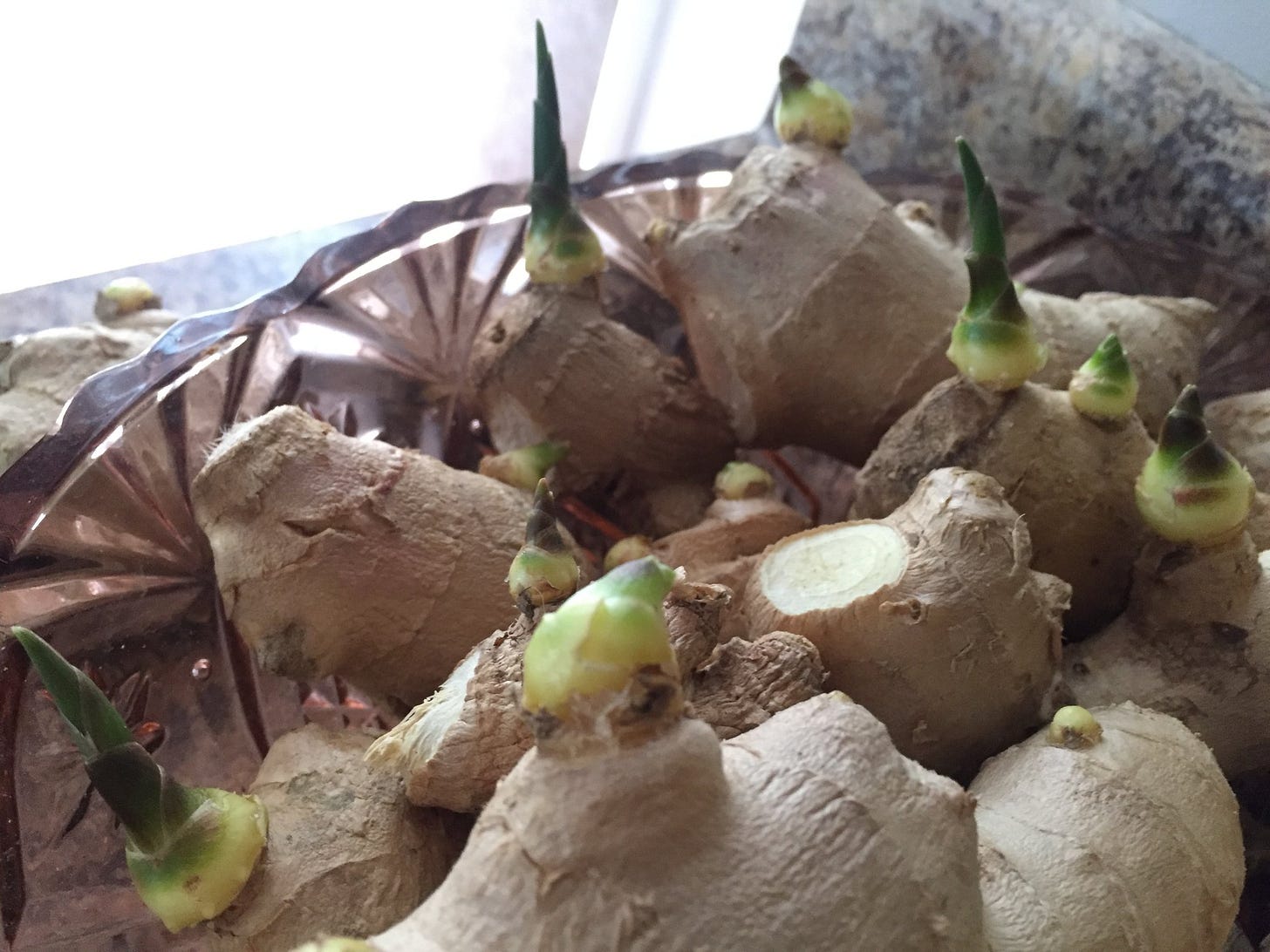
To start ginger you just need a healthy (firm smooth skinned) section of organic ginger rhizome (commonly referred to as "root") from the grocery store and let the ginger rhizome sit in a well lit window (preferably out of direct sunlight) for a week or two. The edible rhizome which most people call a 'root' has the potential to grow green shoots and begin a new plant from the little bulging 'growth nodes'.
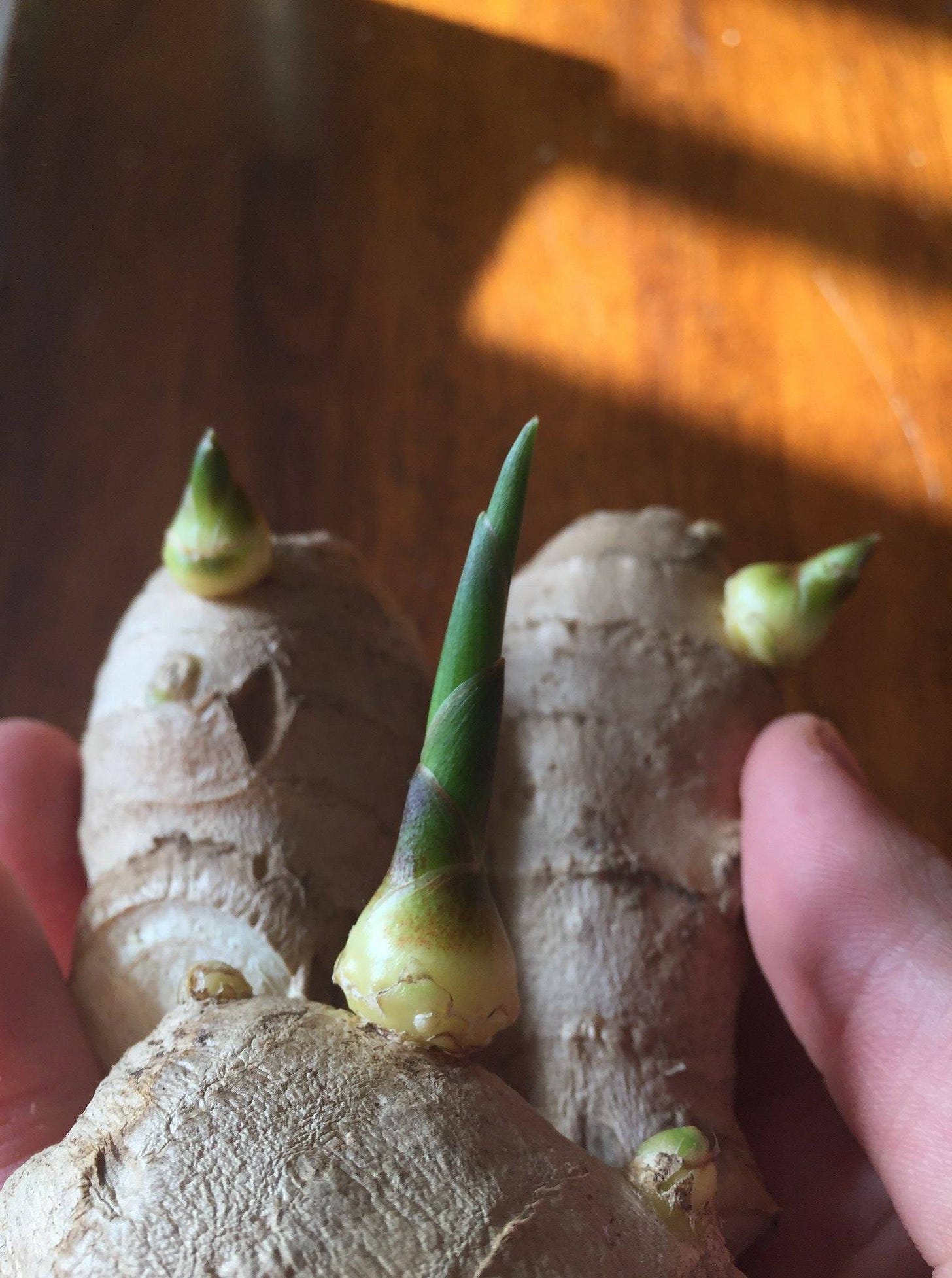
For a soil mixture I find that adding some kelp meal, biochar and compost to a typical potting soil mix really helps the plants to thrive. I typically do about 1/4 compost and 3/4 potting soil mix, adding in a handful of kelp meal and biochar mixed in.
If you do not have access to those soil amendments no worries, normal potting mix (or even natural soil you dig up from outside) will work fine, just keep in mind that ginger rhizomes like well drained soil so try to let the soil dry out a bit between waterings if you are using a more dense natural soil mix.
Take the ginger rhizome and plant it about 2 inches beneath the soil in a pot. Water well, and then wait for your new ginger plant to sprout up and set its first leaves.
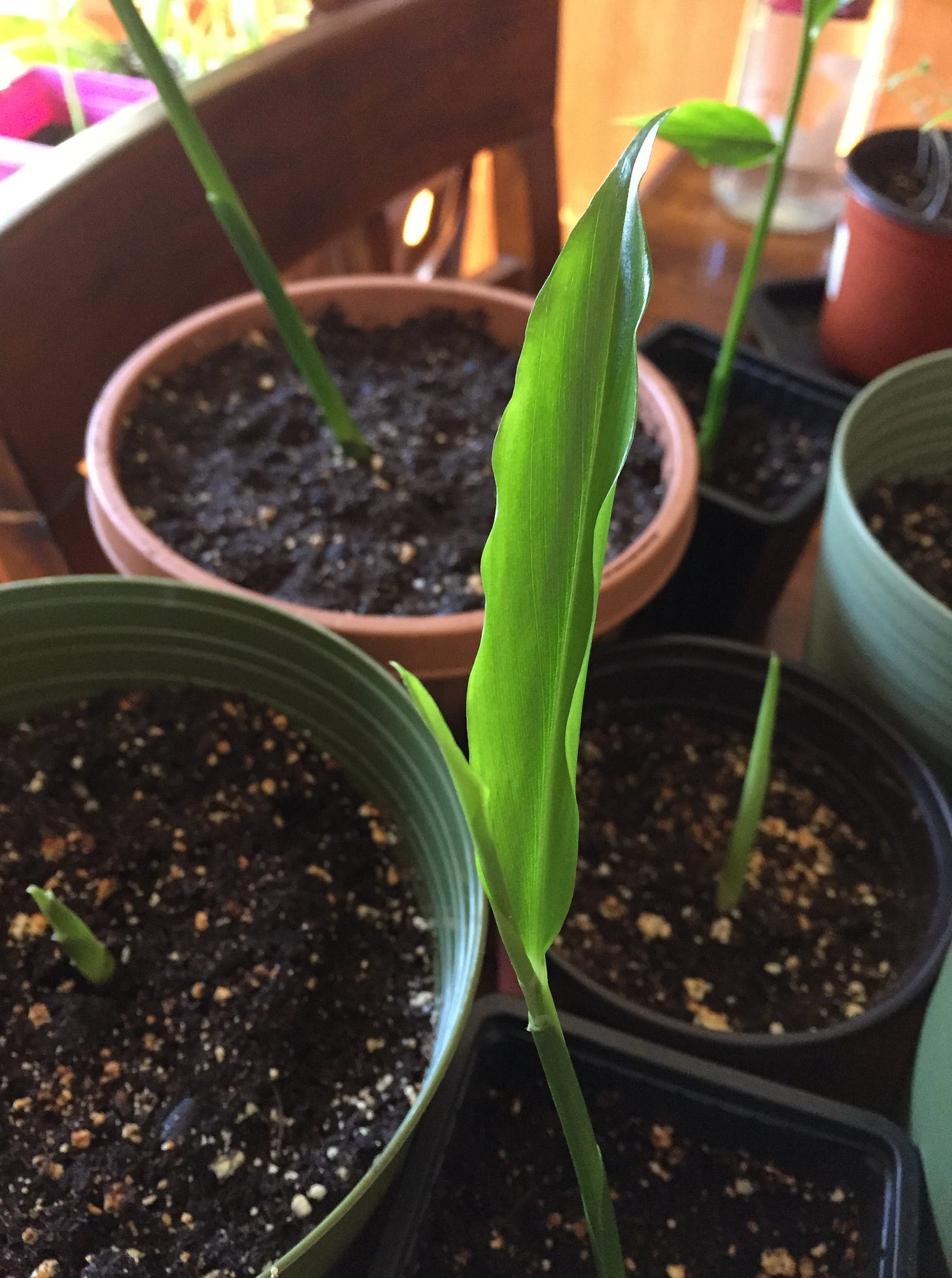
Ginger grows underneath a dense jungle canopy in it’s natural habitat so you can maximize the health of your plants by simulating these conditions through companion planting and creating a microclimate in your home, on your balcony or in your yard.
Being a subtropical plant, ginger likes humidity, so if you live in a dryer region (or have a home heating system that drys your air out) if at all possible place your ginger plants near a water feature (such as a fountain or a humidifier if inside). You can also just use a cheap spray bottle and mist the leaves once or twice a day to help give the plants that extra little bit of localized moisture and humidity to help them thrive (if a water feature or humidifier is not possible). With all that being said, ginger plants will usually still survive (and provide a harvest) without creating a more humid microclimate (if the plants are growing in a dry growing space) they just grow a bit slower and may not look as vibrant and verdant.
Ginger can be grown outside in partial sun at our latitude (the 42nd paralell). We have found that avoiding direct afternoon sun helps the plants to thrive is this prevents sunburn the leaves.
They can be left to grow outside as long as temperatures stay above 10C (50F).
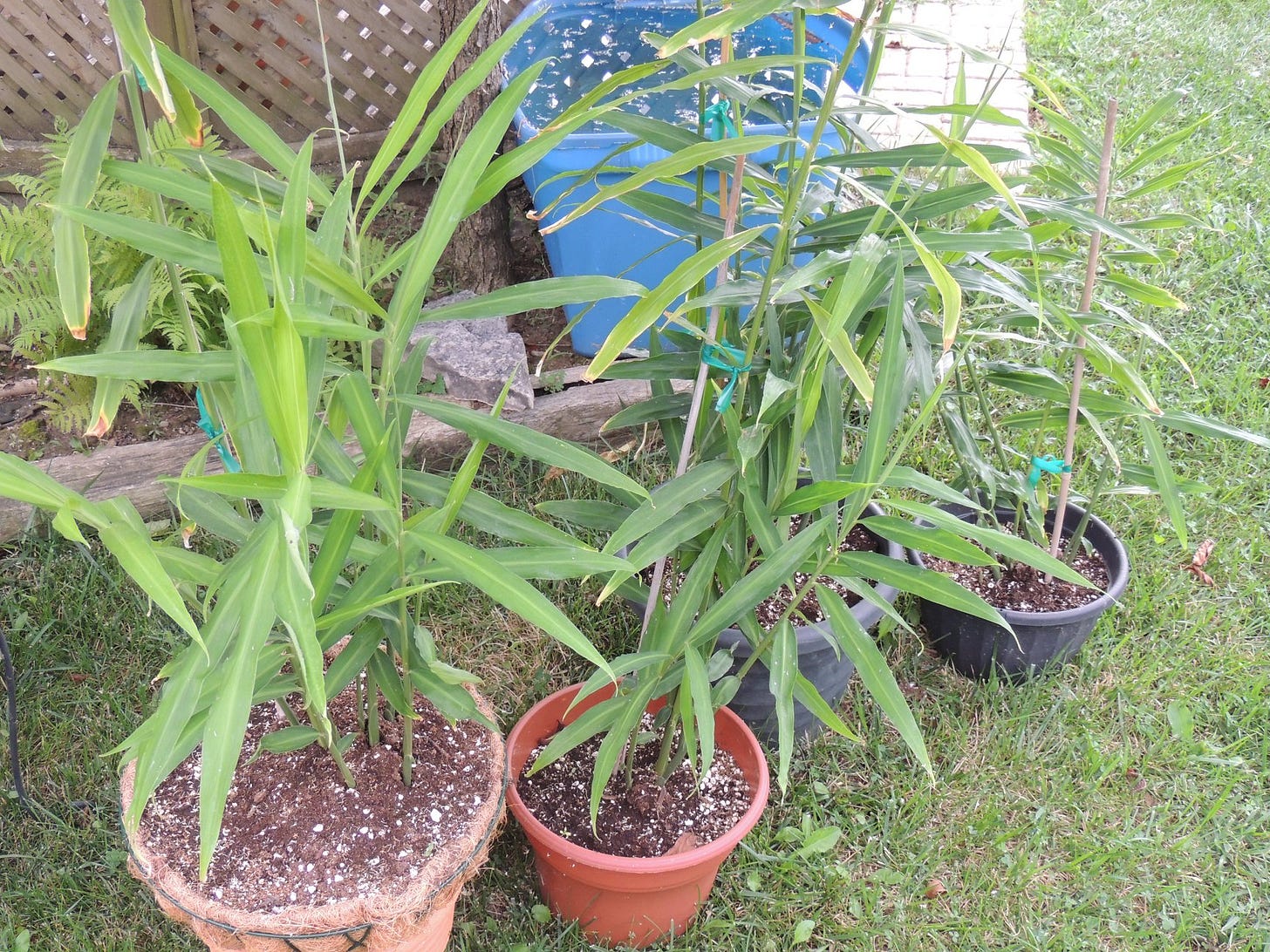
I highly suggest that anyone who has access to good rhizomes at the grocery store give growing ginger in pots a try. Getting them to sprout is relatively easy (as what you see in the pictures above). With some patience, you get yourself a beautiful houseplant which can provide you super nutritious food/medicine (in the form of juicy 'spicy' rhizomes) after only 7 months or so in the pot. I usually leave our plants to grow for 11 months plus (bringing them in when its too cold to have the plants outside) to maximize the harvest yield and the potency of the medicinal compounds in the rhizomes. The leaves are also edible (providing a steady food source as they grow inside) and are really nice to add to Asian style soup broths or stir-fries.
The leaves can also be finely chopped and mixed into salads, sprinkled as a garnish, or minced and stirred into grain-based dishes. Ginger leaves are great when incorporated into soups, curries, and stews, stir-fried with vegetables, cooked in soy sauce and served with rice, minced and added to stuffings, or dipped in miso paste or batter and fried, served with dips.
In addition to savory preparations, Ginger leaves can be infused into syrups and fillings for baked goods or used to impart a light, herbal flavor in desserts.
The leaves can also be dried and crumbled as a crisp topping, pickled for extended use, or steeped into a tea. Ginger leaves pair well with aromatics such as garlic, shallots, scallion, and chile peppers, spices including turmeric, cinnamon, coriander, mint, and lemongrass, honey, soy sauce, and sesame oil. We added some diced ginger leaves to add a fun twist to our take on a Balinese condiment called “Sambal Matah”
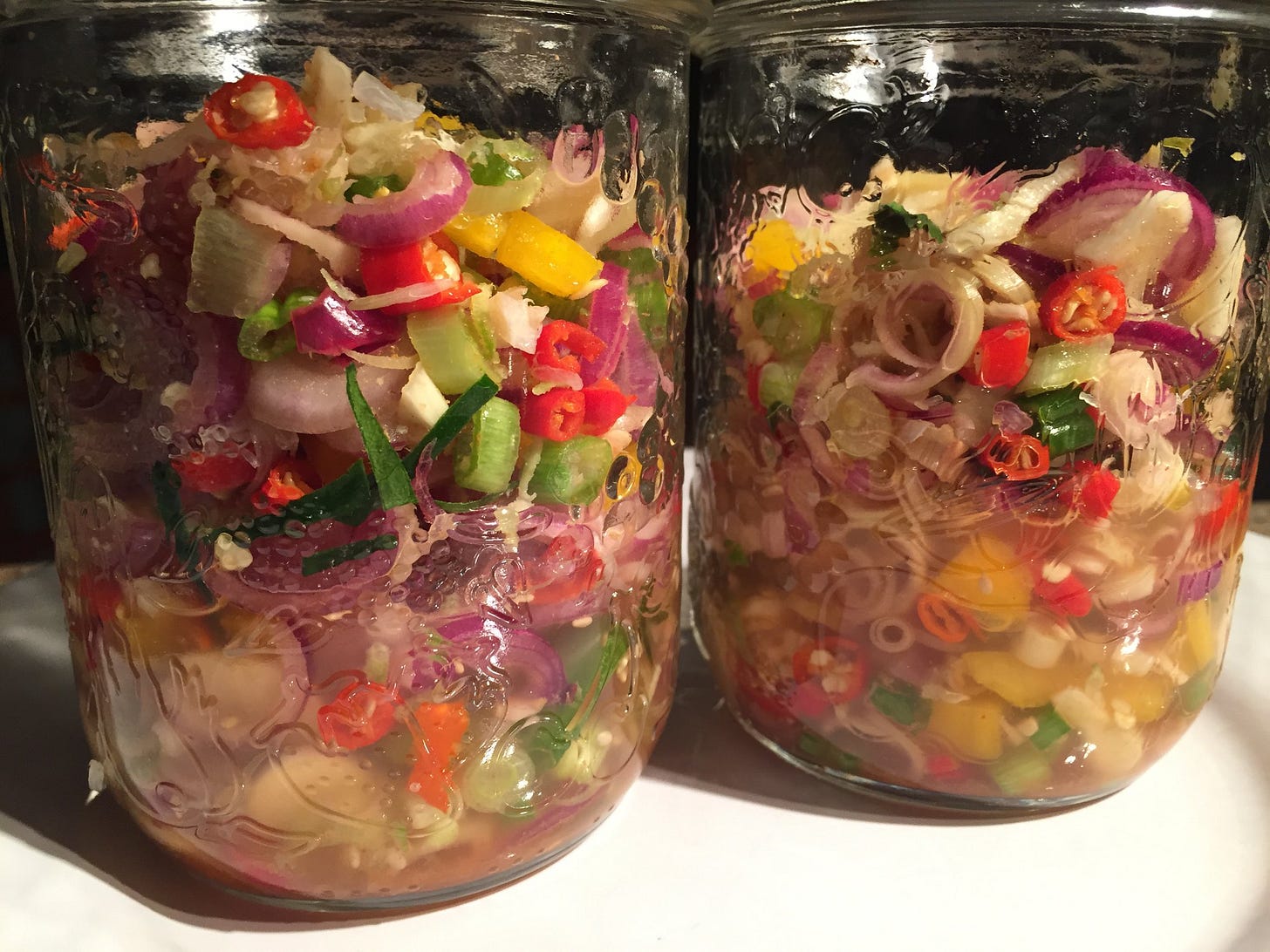
Ginger leaves can be finely chopped, added to ice cube trays, and filled with oil or water as an extended storage method. These frozen cubes can be quickly added to cooking and impart a fresh flavor.
Ginger leaves contain significant amounts of potassium, magnesium and calcium to build strong bones and teeth. In Asia, especially in China, Ginger leaves are utilized in natural medicines. The leaves are steeped into a tea and are served with honey and lemon as a digestive soother. Ginger leaf tea is consumed for morning or motion sickness, colds, nausea, indigestion, and other illnesses. The leaves also contain antibacterial and antifungal properties.
The beauty of growing ginger at home is once you get a good harvest you can reserve one section of the harvested rhizome to start the process all over again (producing a new plant) and get access to an endless supply of ginger after your initial sourcing out of that seed rhizome.
We started growing our own about 7 years ago and from that first 3 dollar purchase (of an organic ginger rhizome section from a grocery store) we have continued to save a portion from each harvest and scale up our production. Now we grow about 11 potted plants annually and get at least a 20 pound harvest of rhizomes out of them annually (while still having enough left over to perpetuate next years seedlings).
Here is a video where I talk about some of our early experiences growing our own ginger at home:
For additional information about growing your own ginger plants in containers see this link.
For more detailed information see this link.
We have also more recently learned that you can cultivate your own Turmeric rhizome (which offers it’s own amazing list of medicinal benefits) at home using similar methods to cultivating ginger.
Anyone interested in more info on cultivating turmeric specifically (as there are a few slight differences in growing it that will increase your chances of getting a good harvest) feel free to ask in the comments section or message me.
Health Benefits Of Ginger
So far, more than 400 bioactive compounds have been identified in ginger.
At least 50 of these are antioxidants.
Ginger also offers a number of trace metals and vitamins. Vitamins include thiamine (B1), Riboflavin (B2), Niacin (B3), Pantothenic acid (B5), Vitamin B6, Folate, Vitamin C and Vitamin E. Trace metals include Calcium, Iron, Magnesium, Manganese, Phosphorus, Potassium, Sodium and Zinc.
Gingerols are the major compounds in fresh ginger and less so in dry ginger. Shogaols are produced from gingerols during the drying process and are present in higher amounts in dried ginger. Ginger also contains zingerone, zerumbone, pungent oleoresins, some terpenoids and flavonoids. All of these compounds are antioxidants, while some of them have anti-tumor, anti-inflammatory, pain-relieving, antimicrobial, and liver-protecting activities.
Here is a list of some of the many health benefits offered by ginger:
1. Ginger Improves Cognitive Function:
Ginger benefits brain aging and inflammation, memory, attention, anxiety, depression, and more. Antioxidants are particularly important for the brain since it’s highly susceptible to oxidative damage. Ginger is rich in antioxidants that protect the brain from free radical damage. The antioxidants in ginger also defend the brain against further damage and improve memory loss after a stroke.
In addition, ginger shields glial cells in the brain from damage. These specialized brain cells help preserve neurons and remove metabolic debris and toxins in the brain that contribute to Alzheimer’s.
Ginger increases the level of two of the most important mood-boosting neurotransmitters, serotonin and dopamine. Depression is strongly linked to low levels of both.
Ginger has traditionally been used to treat memory loss and dementia. Now, research shows that it enhances a wide variety of other cognitive functions besides memory. When healthy adults were given dried ginger supplements, they showed improvements in working memory, reaction time, and attention.
Ginger may slow the progression of Alzheimer’s.
Ginger is anti-inflammatory, which makes it a popular remedy for treating the inflammation of arthritis. This anti-inflammatory property is also important for brain health and function, since many brain disorders are linked to chronic inflammation of the brain:
-anxiety
-Alzheimer’s
-dementia
-depression
-post-traumatic stress disorder
Ginger also increases blood flow to the brain. Adequate blood flow is vital because it delivers nutrients to the brain and removes metabolic waste, toxins, and other debris.
2.-Ginger Contains Compounds Which Optimize Mitochondrial Health:
Mitochondria are the powerhouses of your cells, generating energy to fuel your cells’ biochemical reactions. Via optimizing their function and promoting their rates of regeneration within your body you are building a solid foundation for health, vibrancy and longevity from the cellular level up.
One of the major active components within ginger are 6-Gingerol and 6-Shogaol. These compounds have been shown to promote Mitochondrial Biogenesis via activation of AMPK-PGC1ɑ Signaling Pathway.
Another study found that the promotion of mitochondrial biogenesis optimized innate immune cells in the human body (tumor infiltrating CD8+ T cells) which induced inhibition of tumor growth.
For more information on how ginger increases the rates of mitochondrial biogenesis and why that is important see: https://greenmedinfo.com/blog/boosting-mitochondrial-biogenesis-ginger
3. Boosts Your Digestive Power and Stimulates Digestion: Ginger is your new best friend for supporting everything regarding digestive health. Functional dyspepsia is the clinical term used to describe upper abdominal discomfort like acid reflux that is thought to be related to slowing of the digestive system. Ginger has been shown to be help these issues. Ginger helps increase the body’s ability to empty food from the stomach more quickly—known as gastric emptying. With this increased motility in the digestive system, it’s less likely that heartburn or indigestion will occur. In fact, one study of healthy participants showed that taking ginger capsules (1200 mg) with a meal stimulates digestion so much that gastric emptying speed was doubled! Imagine the relief that would come from food leaving your stomach twice as quickly.
The more efficient your digestion is, the more energy you will have because researchers have found that approximately 60 percent of your body’s energy goes to metabolism. If ginger can improve digestion, your metabolism will improve and energy will be more available. This is possible because the quicker you can digest your food, the faster you will absorb the vitamins and minerals from the foods you eat. You will also have less undigested food in your digestive tract; food consumes energy when left undigested. So not only does ginger stimulate digestion by improving symptoms of dyspepsia and speeding gastric emptying, but it also benefits your overall energy levels.
4.-Ginger offers Immunomodulatory benefits and optimizes the innate immune system in a number of other ways:
Ginger in all of its wonder, uniquely displays anti-microbial properties in all four categories; bacterial, viral, fungal, and parasitic.
Ginger also supports the human immune system by acting as an antioxidant and anti-inflammatory. Oxidative stress often contributes to or worsens infections, specifically those caused by viruses. Ginger, because of its antioxidant compounds, plays a supporting role here. Antioxidants are essentially “turn off” free radicals, neutralizing their negative impact and restoring balance in the body. Ginger is teeming with these powerful antioxidants. When the human immune system recognizes that a potentially damaging microbe is trying to colonize part of the body, it begins an attack. Inflammation is part of this immune response process. Inflammation has a helpful role in the body when it occurs at appropriate times, but when inflammation occurs for too long, it's no longer protective. Instead, it can weaken the immune system and lead to further infection and disease.
Ginger and other spices have been shown to play a role in fighting this chronic inflammation
Gingerols have been shown to inhibit protein kinase B (Akt) and nuclear factor kappa B (NF-κB) activation, thus causing an increase in anti-inflammatory cytokines and a decrease in proinflammatory cytokines.
Studies have found ginger to have antiviral properties against the following viruses:
Ginger also contains compounds which inhibit rhinoviral activity. Various extracts of ginger also inhibit Cytomegalovirus, HSV-1, and HIV virus.
The molluscicidal and antischistosomal activities of ginger have been the subject of several studies. Anthelmintic (antiparasitic to worms, such as tapeworms) activity of ginger was demonstrated in vitro and in vivo. The antischistosomal activity of ginger extract was also reported against Schistosoma mansoni. Gingerol and shogaol were identified as potent molluscicidal constituents of ginger against S. mansoni (Mbaveng & Kuete, 2017).
Also: Ginger Kills Yeast and Fungus. In cells, ginger kills 13 types of fungus that cause human diseases.
5.- Anti-Aging and Longevity Benefits:
Mounting evidence suggests that ginger can promote healthy ageing, reduce morbidity, and prolong healthy lifespan. For over three decades, studies have reported that the antioxidant, anti-inflammatory, antimicrobial, antitumor, and antihypercholesterolemic features of the bioactive compounds found in ginger account for its aforementioned health benefits. Ginger can also protect, prevent, and even treat many diseases related to ageing by modulating molecular targets involved in their pathogenesis.
The current findings showed that the lifespan of mammals in lab studies is prolonged by an average 23.16% with the supplementation of 60 μg mL−1 ginger extract (GE), and the extension of lifespan was mainly attributed to the major bioactive compounds in GE, 6-, 8-, 10-gingerol and 6-, 8-, 10-shogaol.
One way ginger impacts mitochondrial health (and by extension the aging process) is by (as explained above) increasing mitochondrial biogenesis, which is the creation of new mitochondria. The older we get, the fewer proper functioning mitochondria we have. Ginger reverses this trend, allowing cells to detox and hold more energy as though they did when the human body is younger.
6. Regulates Cholesterol Level : High cholesterol is now being shown to have a direct correlation with obesity, and obesity can lead to diseases such as cancer, heart disease, and high blood pressure. Ginger has been shown to reduce cholesterol by breaking down the fats that clog arteries.
By expanding the blood vessels, the body’s average temperature increases and this helps to burn more fat. Furthermore, ginger has antioxidant properties that fight free radicals that are found in the blood stream. The anti-inflammatory effects inhibit the blood vessels from becoming inflamed, increasing the flow of blood in the body to cure the pain.
7. Relieves Joint and Muscle Pain: Because of its ability to reduce inflammation, adding ginger into your diet could help treat both muscle pain and arthritis-related joint pain. One study showed that daily consumption of ginger resulted in moderate-to-large reductions in muscle pain caused by exercise-induced muscle injury. Another study found that ginger extract helped decrease knee pain and the need for pain medication in individuals with osteoarthritis. Neurodegenerative conditions like Alzheimer’s disease and Parkinson’s have been linked to oxidative stress and chronic inflammation in the brain. With its wealth of antioxidants and potent anti-inflammatory properties, ginger is believed to play an important role in the health of your brain. Several animal studies have found that ginger extract could protect against brain aging and cognitive decline. Not only that but a 2012 study also found that ginger extract helped improve cognitive function and attention in middle-aged women.
8. Ginger Protects the Liver: Ginger (500 mg/day) helped protect the liver from toxic antituberculosis drugs in a study of 60 people with tuberculosis (RCT). Ginger helped slow down aging-related liver damage in old rats. It was compared to alpha-lipoic acid, which had even stronger effects.
Ginger protects from the detrimental effects of heavy metals and drugs on the liver. It protected both the liver and kidneys against cadmium toxicity in poisoned rabbits and from aluminum toxicity in rats. It also prevented liver damage and scarring from painkillers such as piroxicam in mice.
9. Ginger Contains Potent Antioxidants: Many active components in ginger and its essential oil, such as gingerol and shogaol, are potent antioxidants. They can scavenge free radicals throughout the body and neutralize them — crucial for preventing numerous chronic diseases.
This antioxidant activity underlies the immune-balancing and tumor-fighting benefits of ginger, demonstrated in animal and cell studies. Shogaol activated the detox hub — Nrf2 — in brain cells, which may potentially protect from neurodegenerative diseases like Alzheimer’s.
When added to anti-tuberculosis therapy in 69 people (RCT), 3 g of ginger daily boosted antioxidants and reduced inflammation. By combating inflammation, the biggest lung-damaging factor in tuberculosis, ginger can improve the tuberculosis outcomes.
10. Ginger Fights Cancer: Active compounds in ginger reverse some of the hallmarks of cancer in animal and cellular studies.
Triggering Cancer Cell Death: Compounds from a specific steam distilled ginger extract caused cancer uterine cells to die (via apoptosis). This extract reduced the activity of cancer-causing Bcl2 genes by 90% and increased the activity of cancer-fighting genes (p53). Zerumbone, another ingredient in ginger, triggered pancreatic cancer cell death by acting on the same cancer-fighting pathway (p53). Pungent components from fresh ginger blocked the growth of liver and bone cancer cells. Their antioxidant action rendered the cancer cells less invasive.
Blocking Cancer Cell Growth: Gingerol blocked cancer blood vessel growth in mice with melanoma and stopped breast cancer from spreading in cells. It also stopped skin, stomach, pancreatic, ovarian, and colon cancer cells from making new blood vessels, which slowed down their growth and spreading. Zerumbone from ginger was mostly responsible for these effects, as it could block an important cancer pathway (NF-êB) in cell studies.
11. Ginger Protects the DNA: Ginger protected sperm DNA against oxidative damage in a study of 100 infertile men. All men took 500 mg of ginger powder daily for 3 months, after which their sperm DNA quality greatly increased. Ginger’s DNA-protective effects are not important only for fertility. Ginger essential oil also reduced DNA damage from a mold toxin (aflatoxin B1) in cells.
12. Antibacterial Properties: If you aren’t convinced of the medicinal properties of ginger yet, you will be now! Researchers have found that ginger is an effective antibacterial for many drug-resistant bacteria in clinical applications. In their study, the researchers stated that “ginger has great potential in the treatment of many microbial diseases [such as Bacillus and E. coli].” The antibacterial benefits don’t stop there. In oral health, two types of ginger have been shown to inhibit the growth of pathogens that contribute to periodontitis (inflammation of the gums that is caused by gum bacteria). The antibacterial properties that ginger possesses show that food truly is medicine.
13. Weight Loss: Ginger can promote weight loss by activating the metabolizing and helping to burn fat. Ginger tea improves your metabolism. Indigestion is a common problem for many people, and ginger tea helps by easing blockages in the colon and promoting a natural cleansing action. By removing toxins through the bowel, as well as extra waste, the body will shed weight. Ginger contains chromium, magnesium, and zinc, which boost the immune system and help to give your body more energy.
Ginger Tea Can Suppress Your Appetite
Ginger tea is a great way to feel fuller, and is a natural appetite suppressant. Since it contains water, one of the most abundant hunger satisfiers, a glass of this before your meal helps to promote eating less food. Ginger has extremely few calories; therefore, by sipping on ginger tea all day, you will not experience intense hunger. Ginger has a positive effect on norepinephrine and dopamine: two hormones that activate the part of the nervous system that reduce hunger.
Ginger Tea for Weight Loss Works:
Ginger tea has been scientifically proven to help you lose weight. The Journal of the Science and Food of Agriculture tested the effect of ginger on obese rats in 2014. After receiving ginger water for a month, the studies confirmed significant weight differences in the rats. In Ayurveda remedies, ginger has been used for holistic health-care for over 4,000 years, and is also used widely in Asian cuisine. Ginger is a known diuretic; so while it helps to fill you, it is also important to drink water with ginger, because it can dehydrate you. For every cup of tea, drink another glass of water.
Stem cells are the fundamental building blocks of the human body. Cells can differentiate and reproduce any tissue such as heart tissue, muscle, cartilage, bone, or liver. Newborn children have a lot of circulating stem cells that are needed for development and can quickly help them recover from infectious diseases and injuries. As we age, the quantities of circulating stem cells in the body begin to reduce each year, making healing and recovery much more difficult over time. You can increase the production of endogenous stem cells via eating specific superfoods (including ginger) to boost your health and circulating stem cell count.
For additional data and studies related to the myriad health benefits offered by ginger:
https://www.ncbi.nlm.nih.gov/books/NBK92775/
https://www.hindawi.com/journals/omcl/2022/4748447/
https://www.ncbi.nlm.nih.gov/pmc/articles/PMC6341159/
https://www.sciencedirect.com/science/article/abs/pii/S1756464616304121
https://www.ncbi.nlm.nih.gov/pmc/articles/PMC6616534/
https://pubmed.ncbi.nlm.nih.gov/31369153/
https://academic.oup.com/jpp/article/61/7/961/6136041
https://www.ncbi.nlm.nih.gov/pmc/articles/PMC3083808/
https://pubmed.ncbi.nlm.nih.gov/29393665/
https://www.ncbi.nlm.nih.gov/pmc/articles/PMC3665023/
https://www.tandfonline.com/doi/full/10.1080/09064710.2019.1606930
https://www.ncbi.nlm.nih.gov/pmc/articles/PMC7754412/
https://www.frontiersin.org/articles/10.3389/fnut.2022.809621/full
https://www.ncbi.nlm.nih.gov/pmc/articles/PMC6920395/
https://applbiolchem.springeropen.com/articles/10.1007/s13765-018-0352-x
https://www.ncbi.nlm.nih.gov/pmc/articles/PMC5015668/
https://pubs.rsc.org/en/content/articlelanding/2022/fo/d2fo01602h
https://www.ncbi.nlm.nih.gov/pmc/articles/PMC3609356/
https://www.lilychoinaturalhealing.com/journal/2019/5/29/ginger-as-antiparasitic-and-antimicrobial
https://www.ncbi.nlm.nih.gov/pmc/articles/PMC3958926/
https://pubmed.ncbi.nlm.nih.gov/35708209/
https://www.ncbi.nlm.nih.gov/pmc/articles/PMC4565635/
Ginger In The Kitchen
Here are some pictures that show some of the ways we like to enjoy our ginger harvests (both in a culinary sense and as part of our ‘natural first aid kit’ where we use food as medicine). Hopefully this will inspire you to try growing some of your own and making your own creations in the kitchen :)
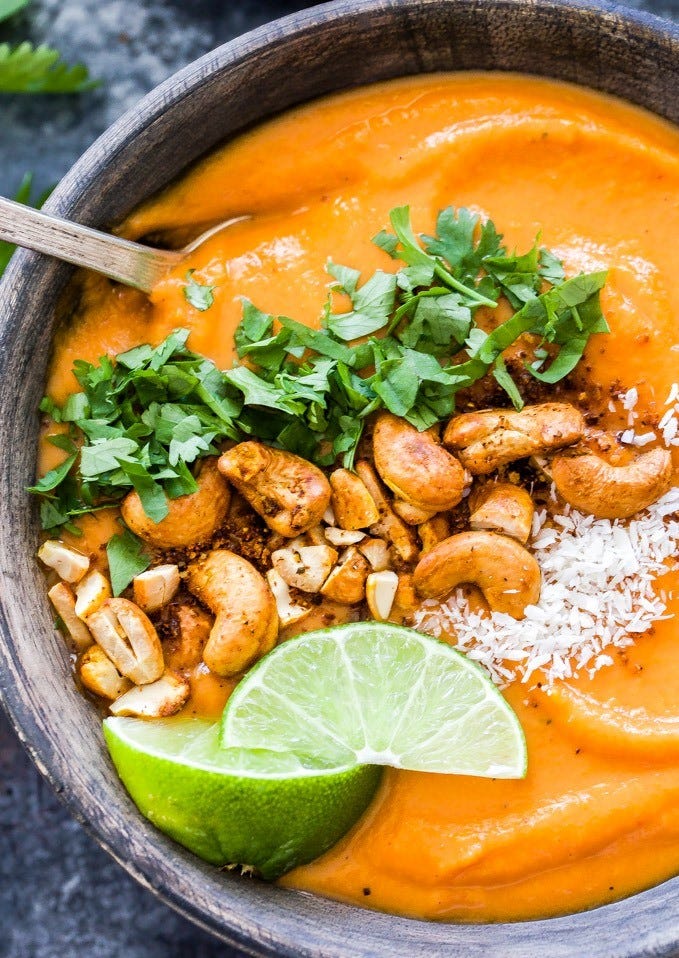
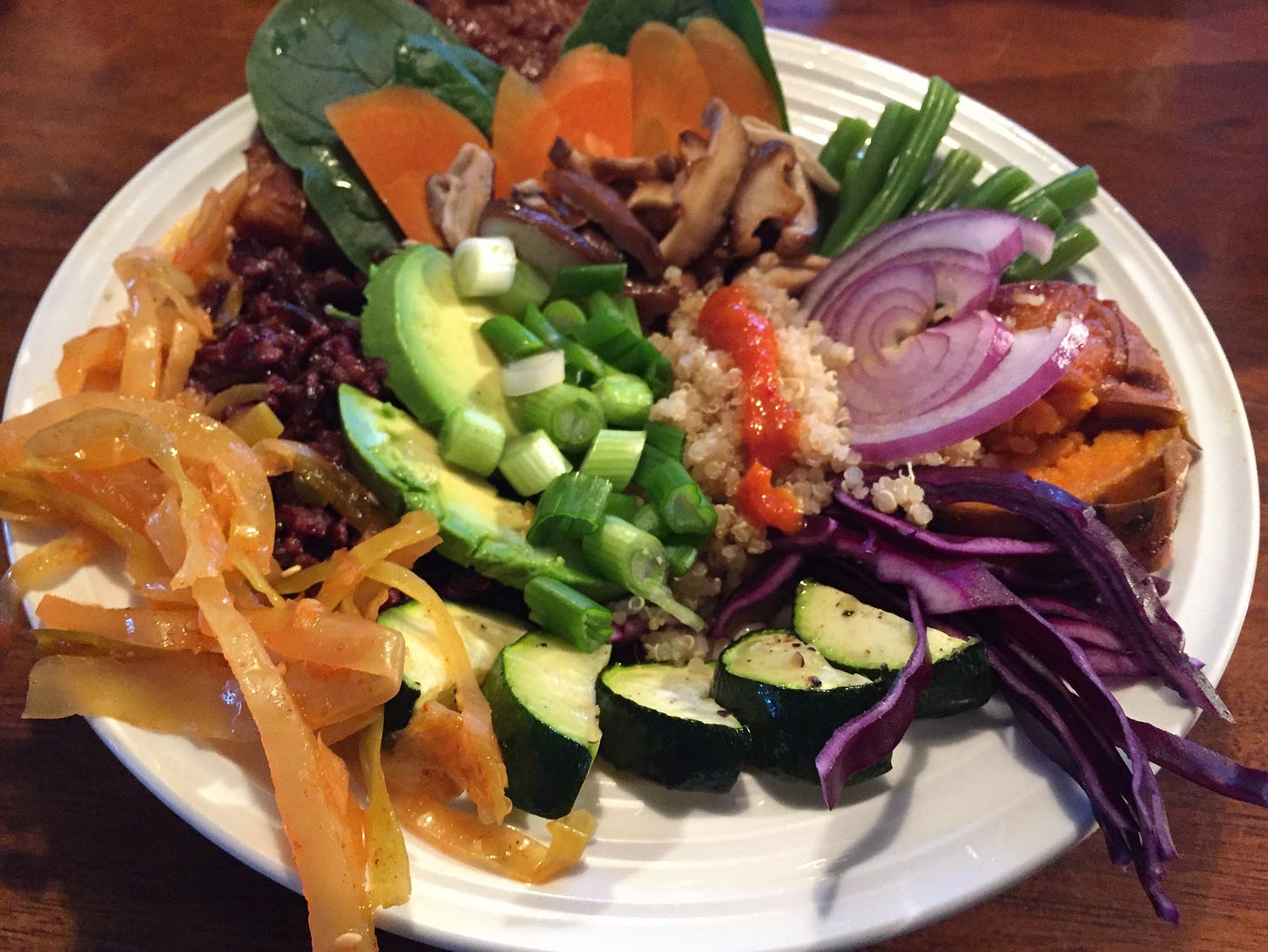
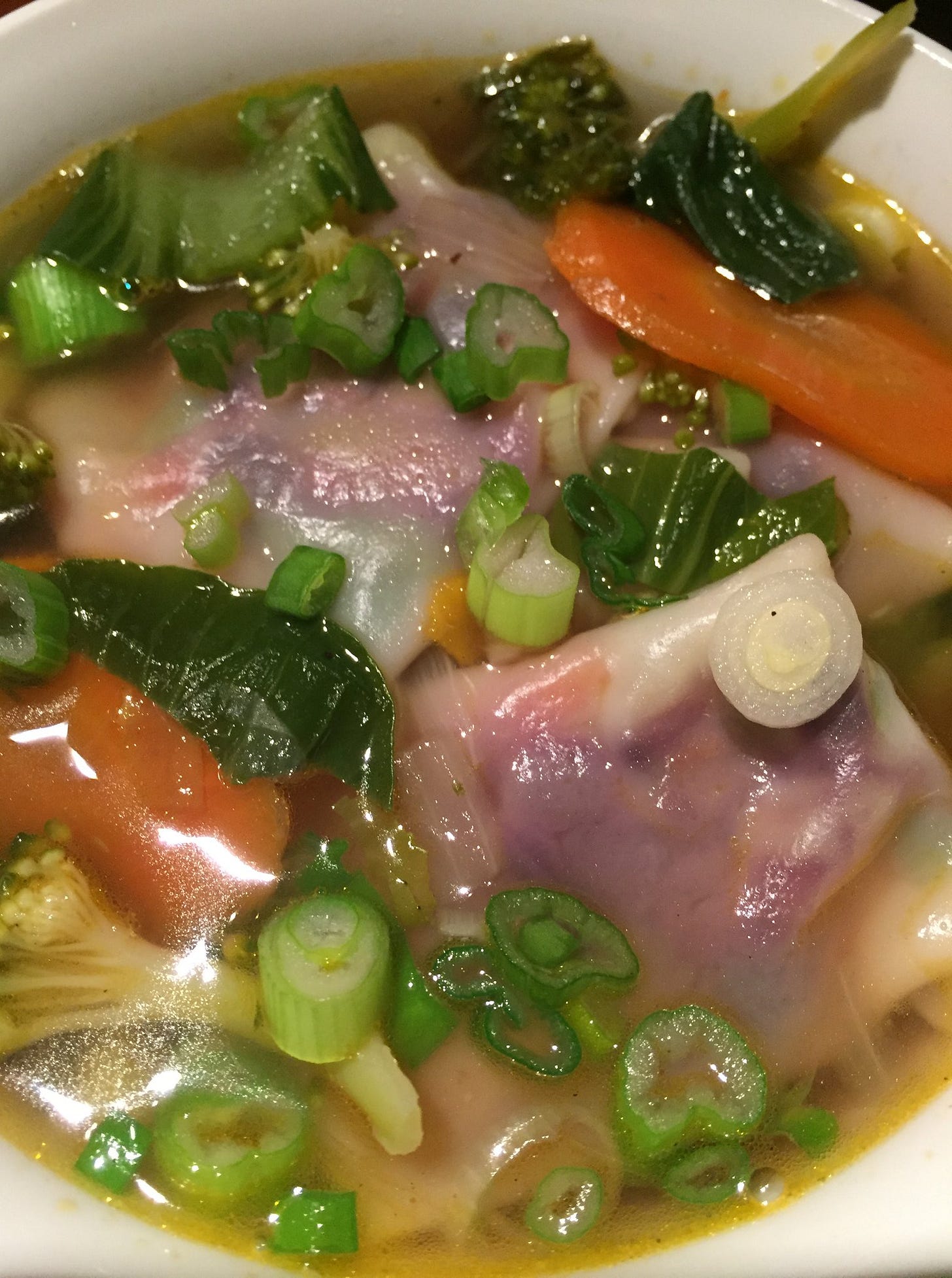
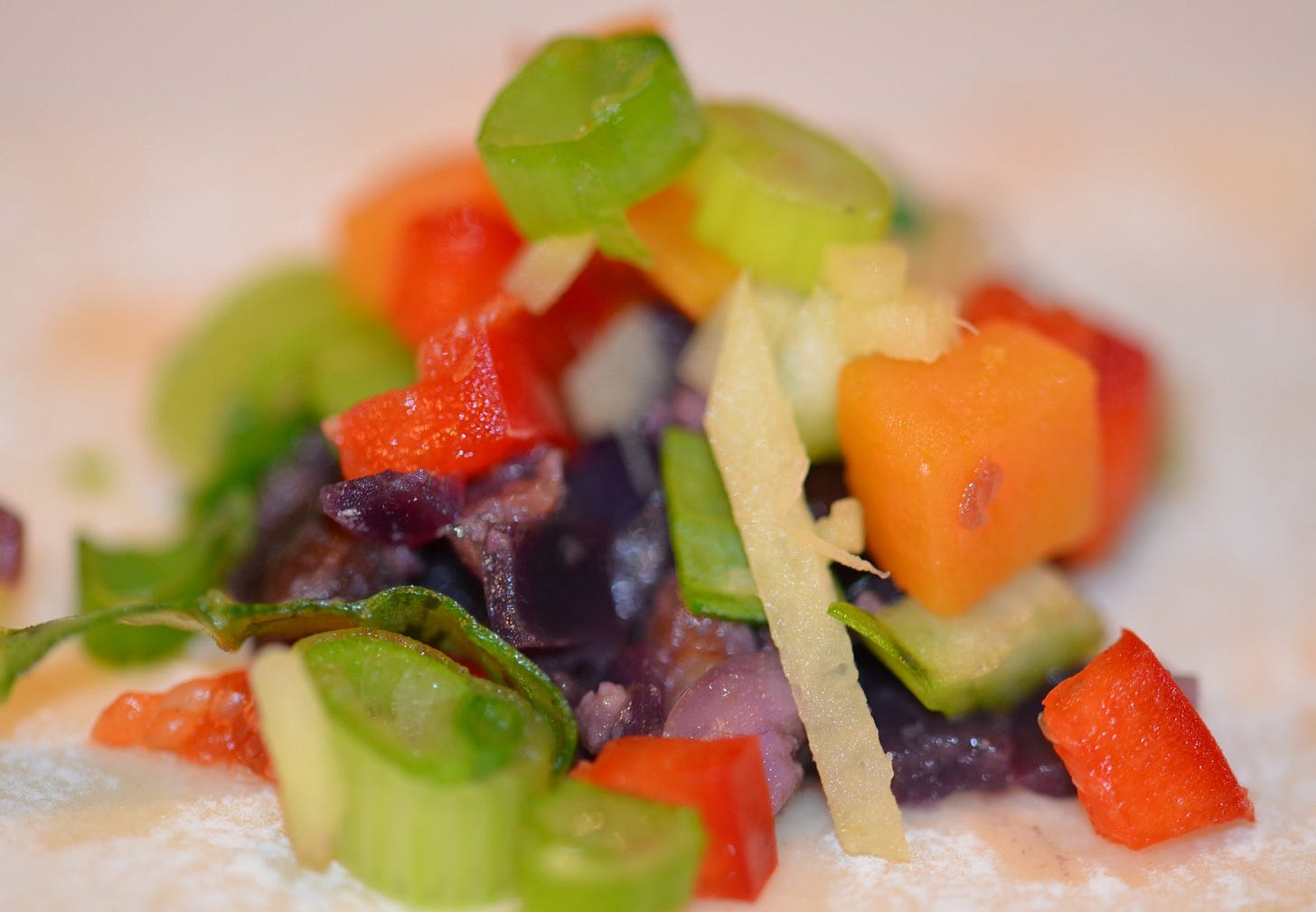
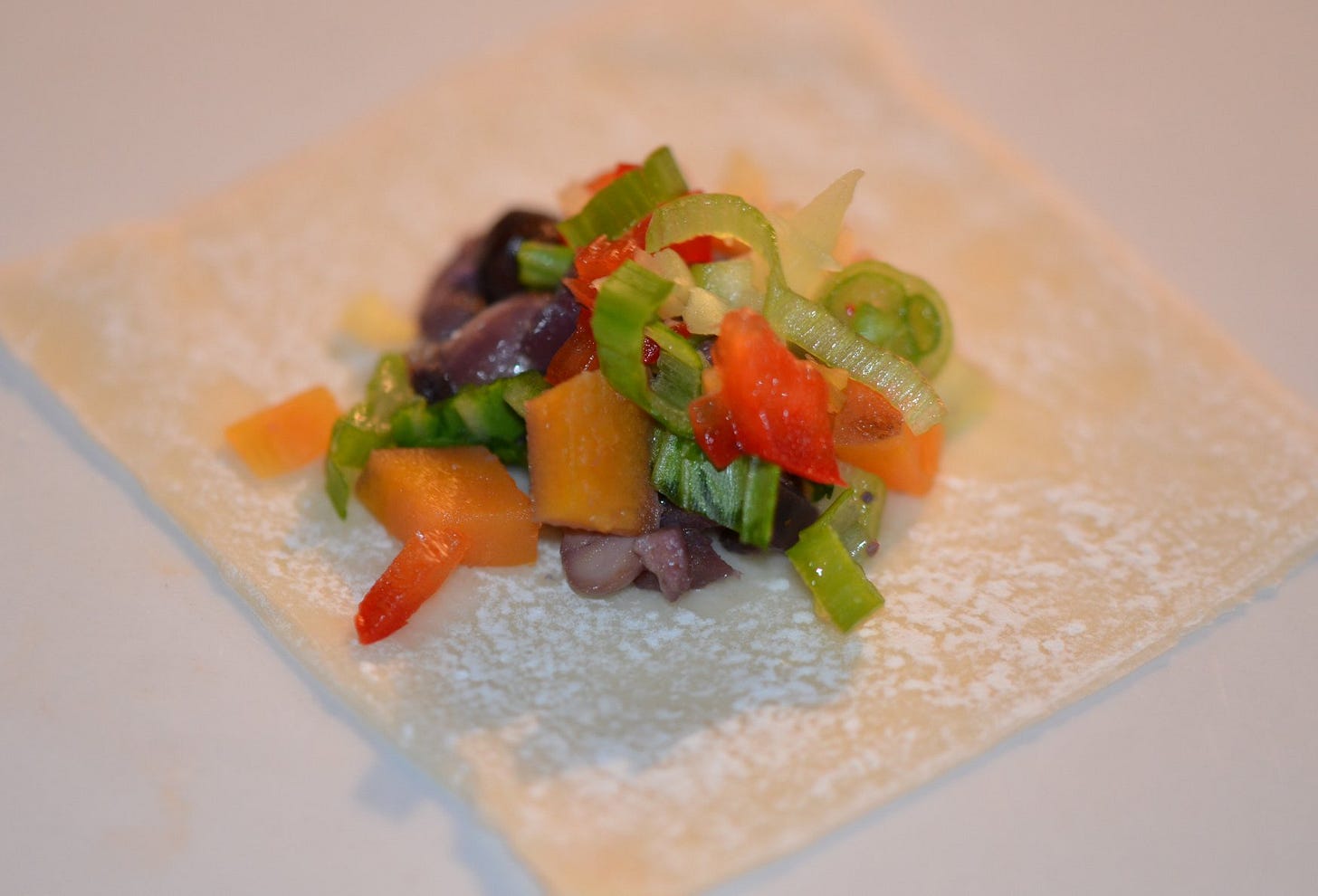
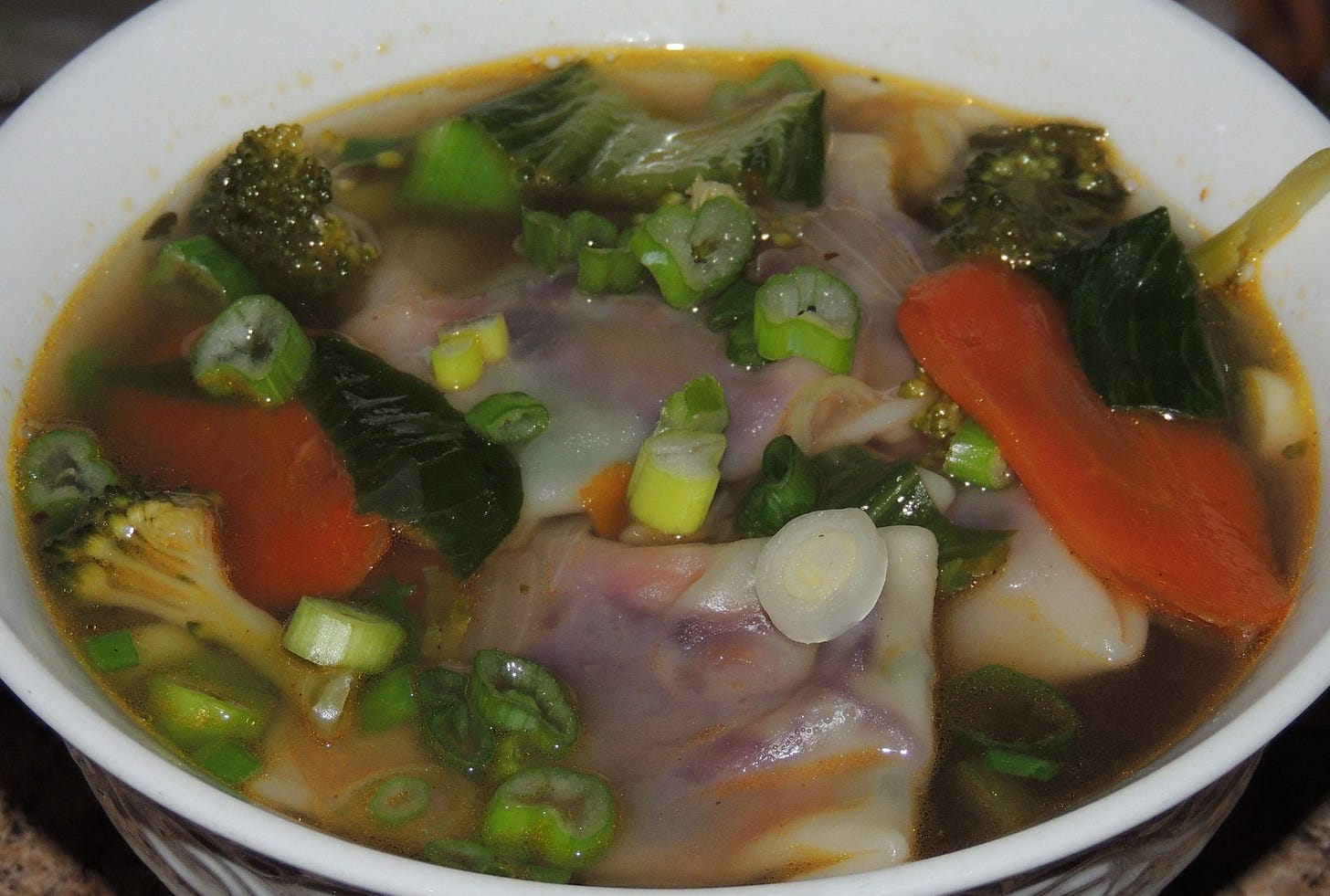
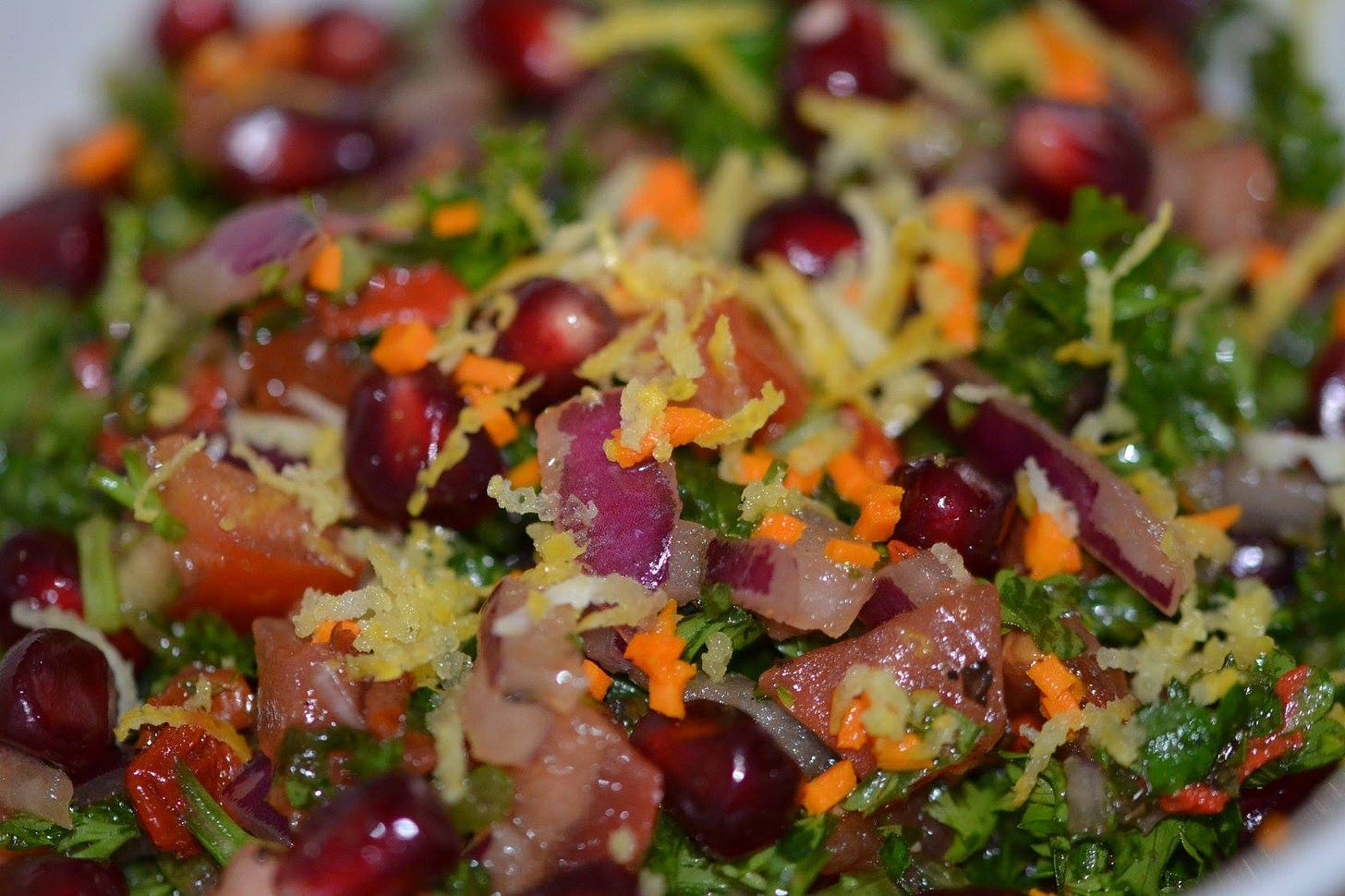
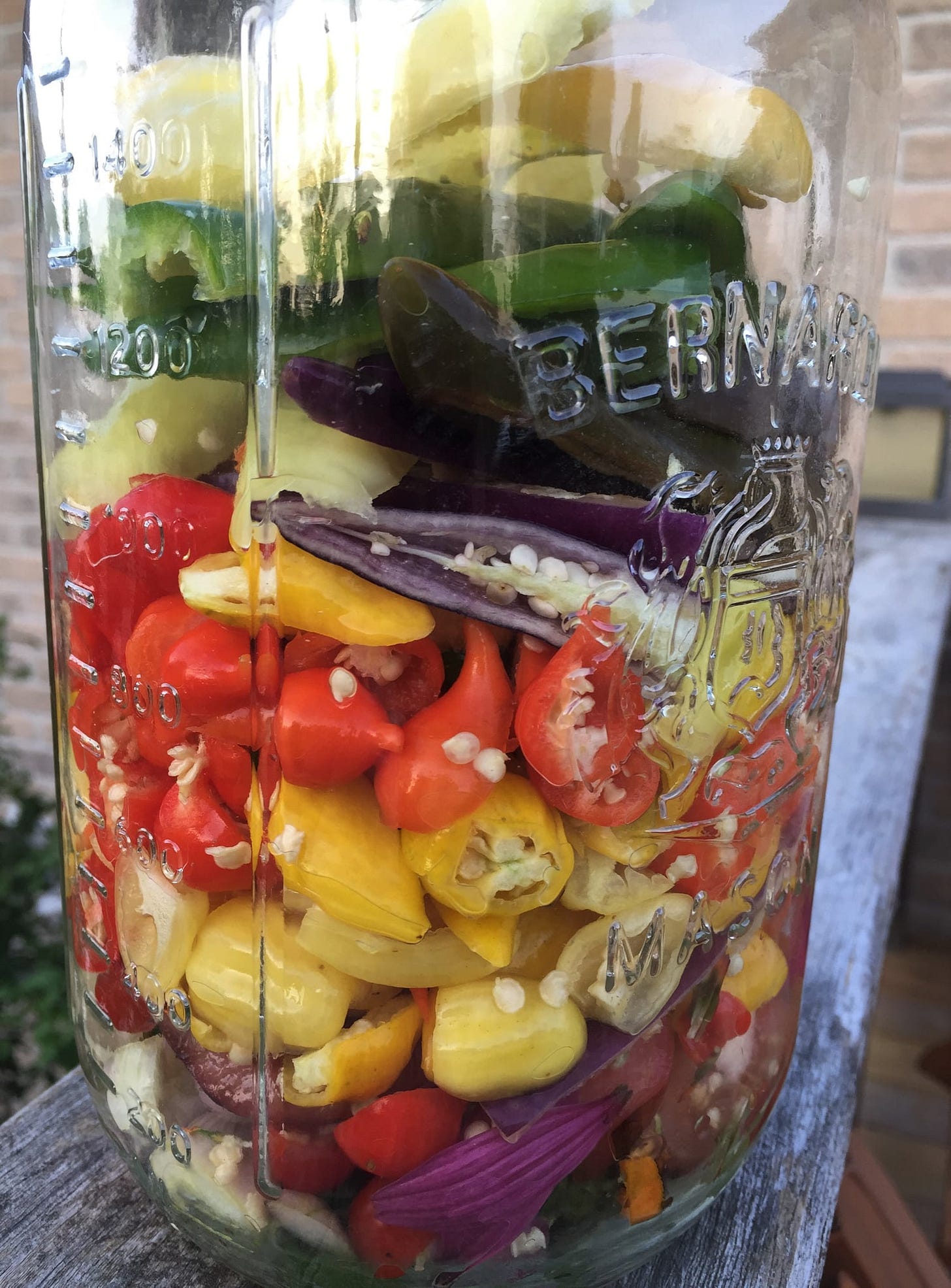
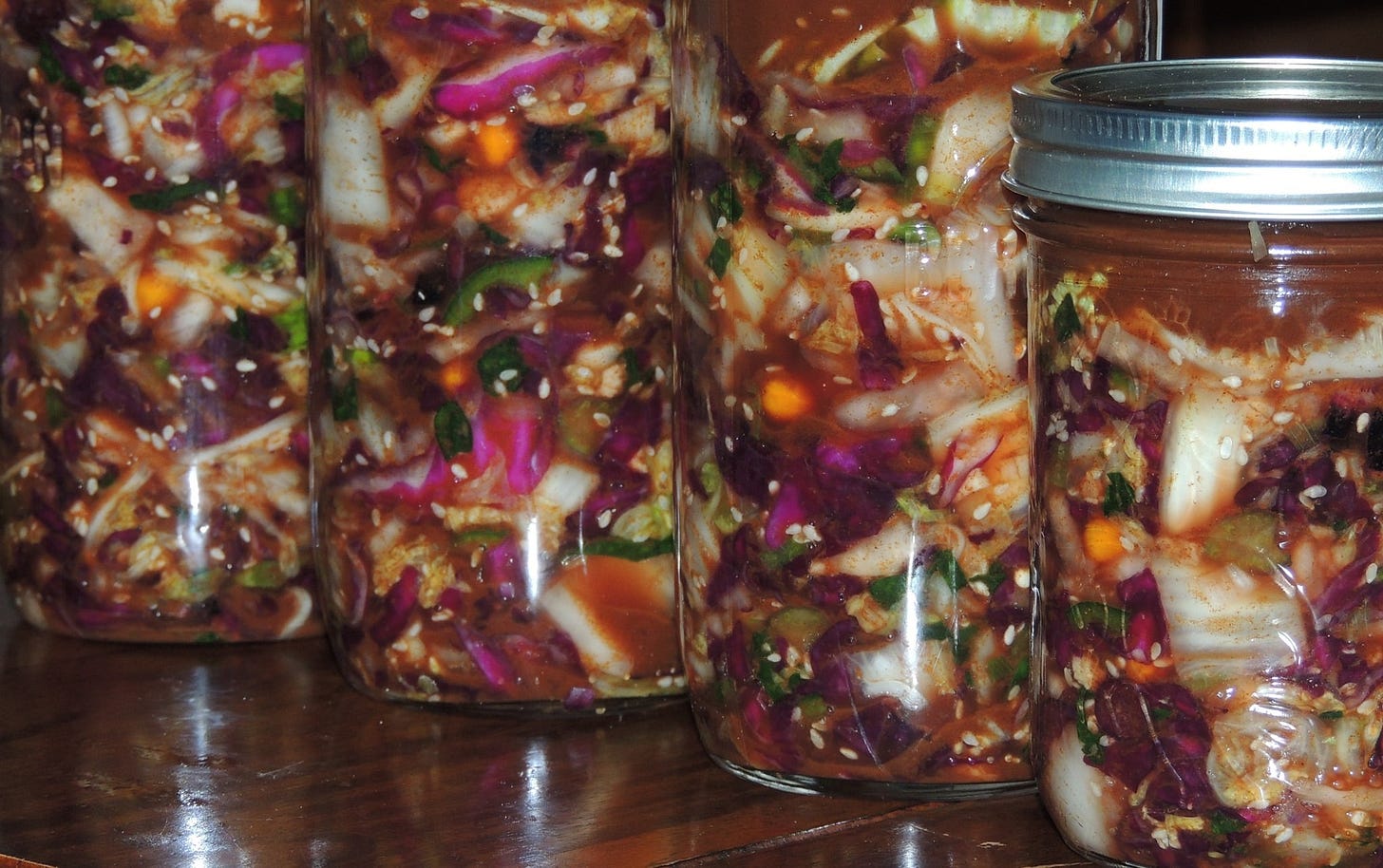
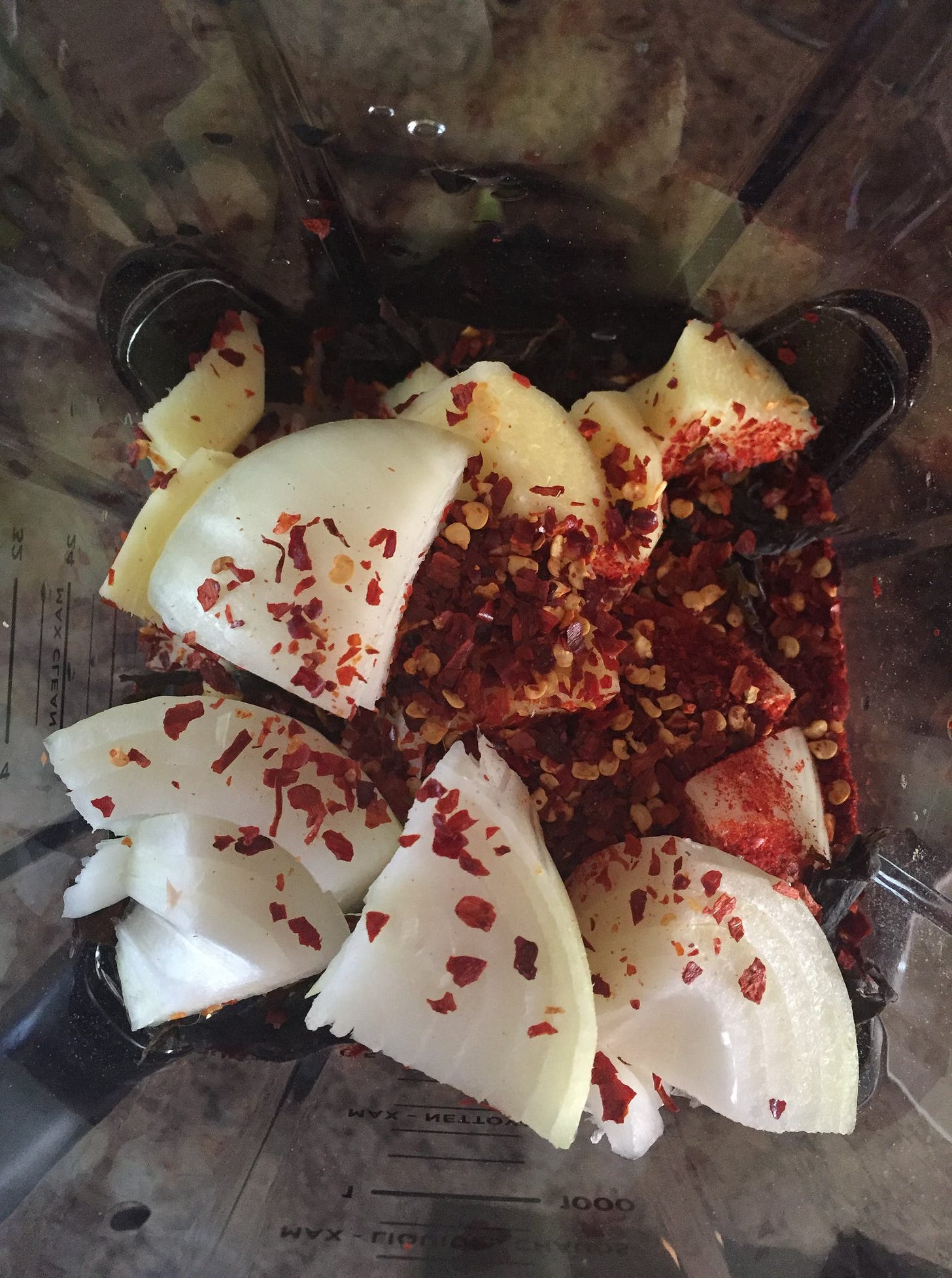
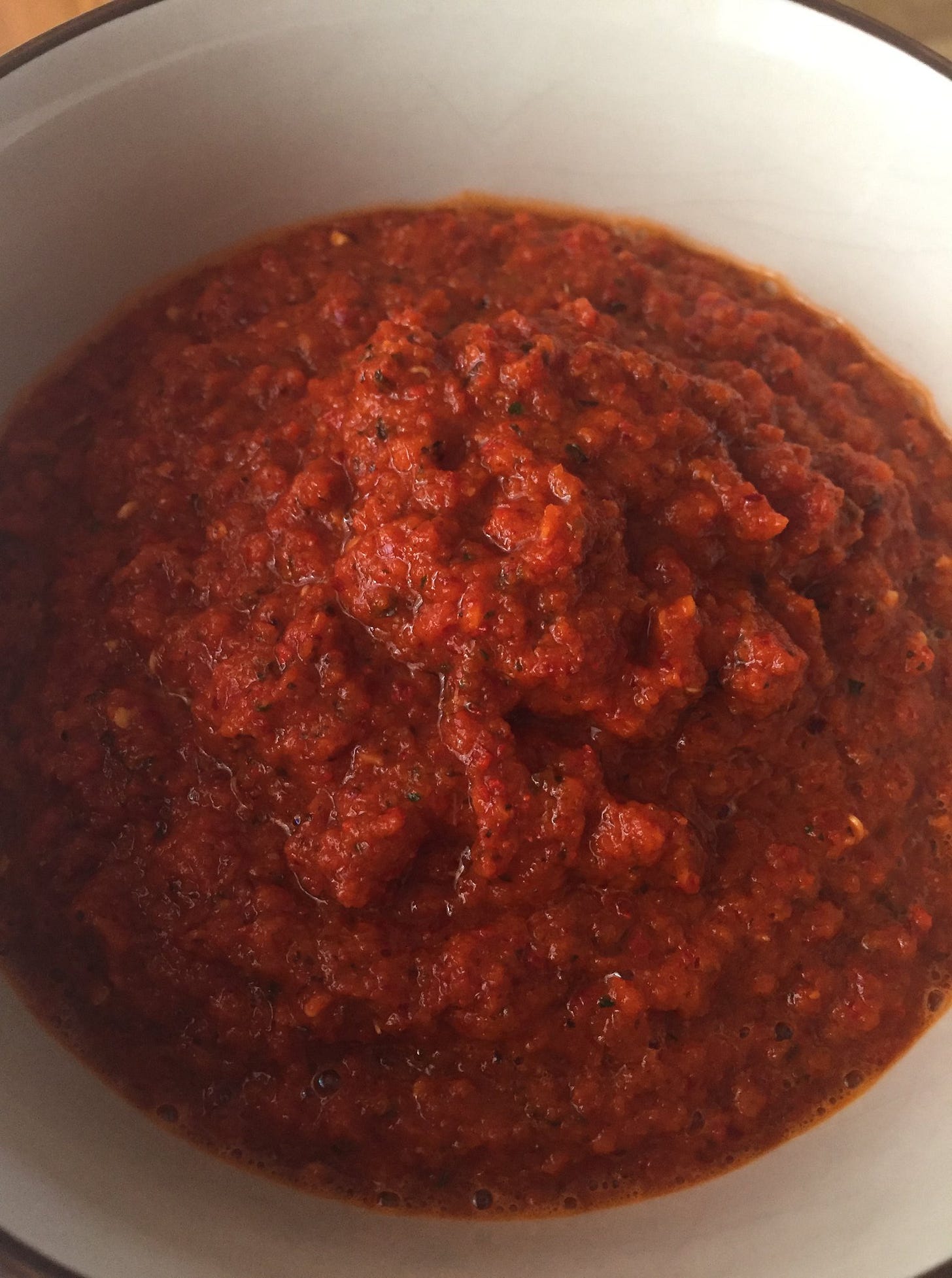
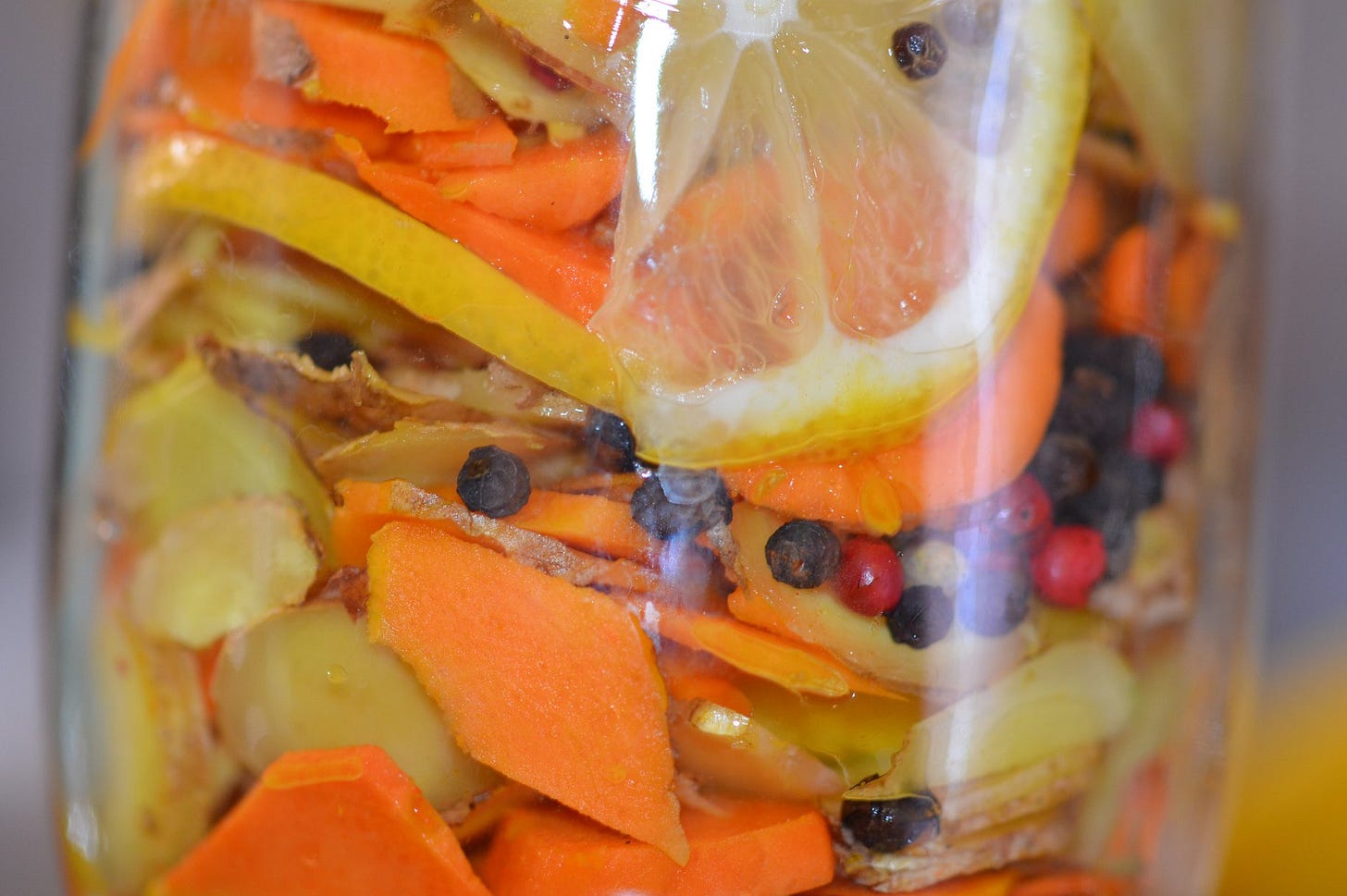
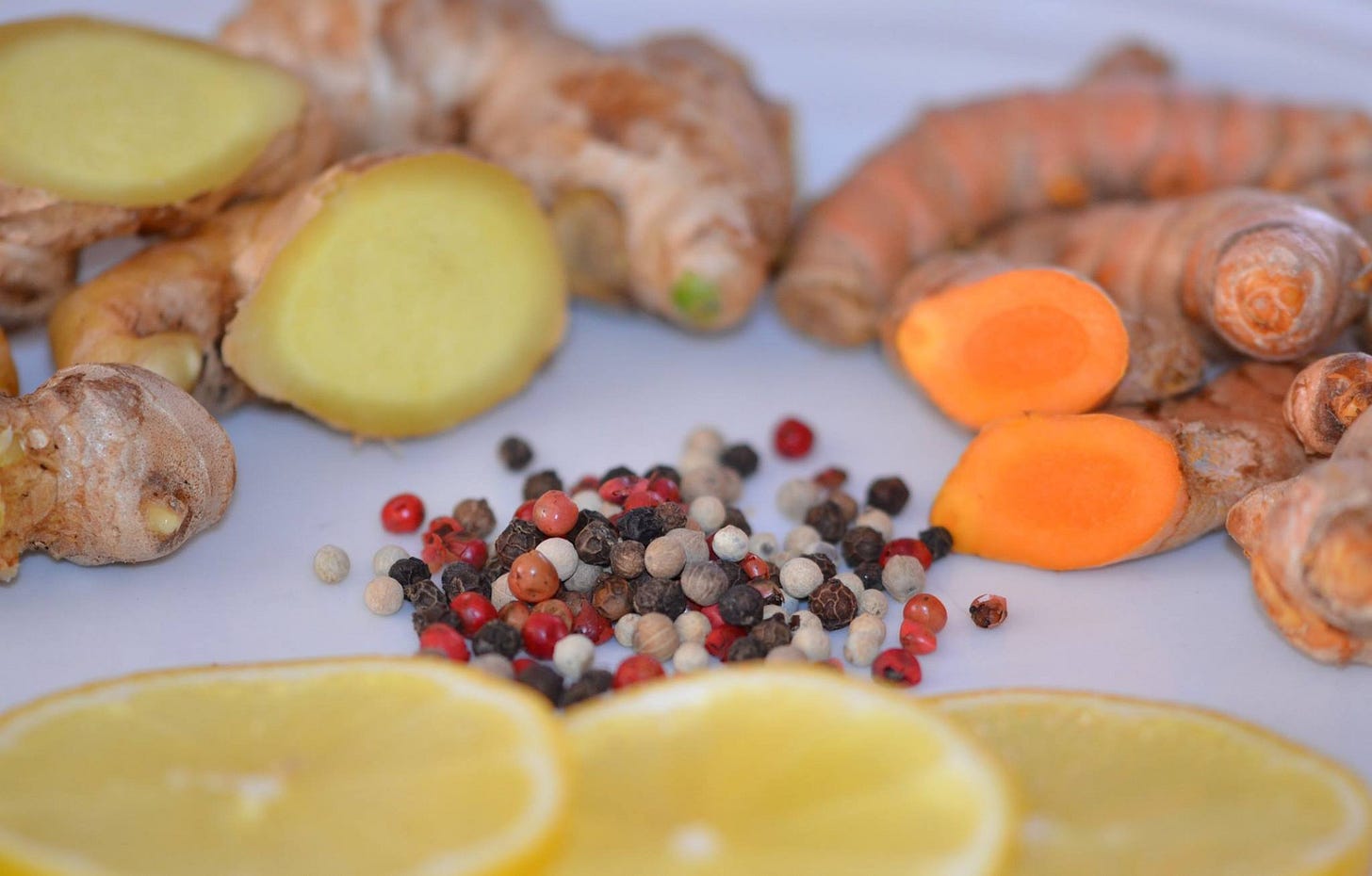
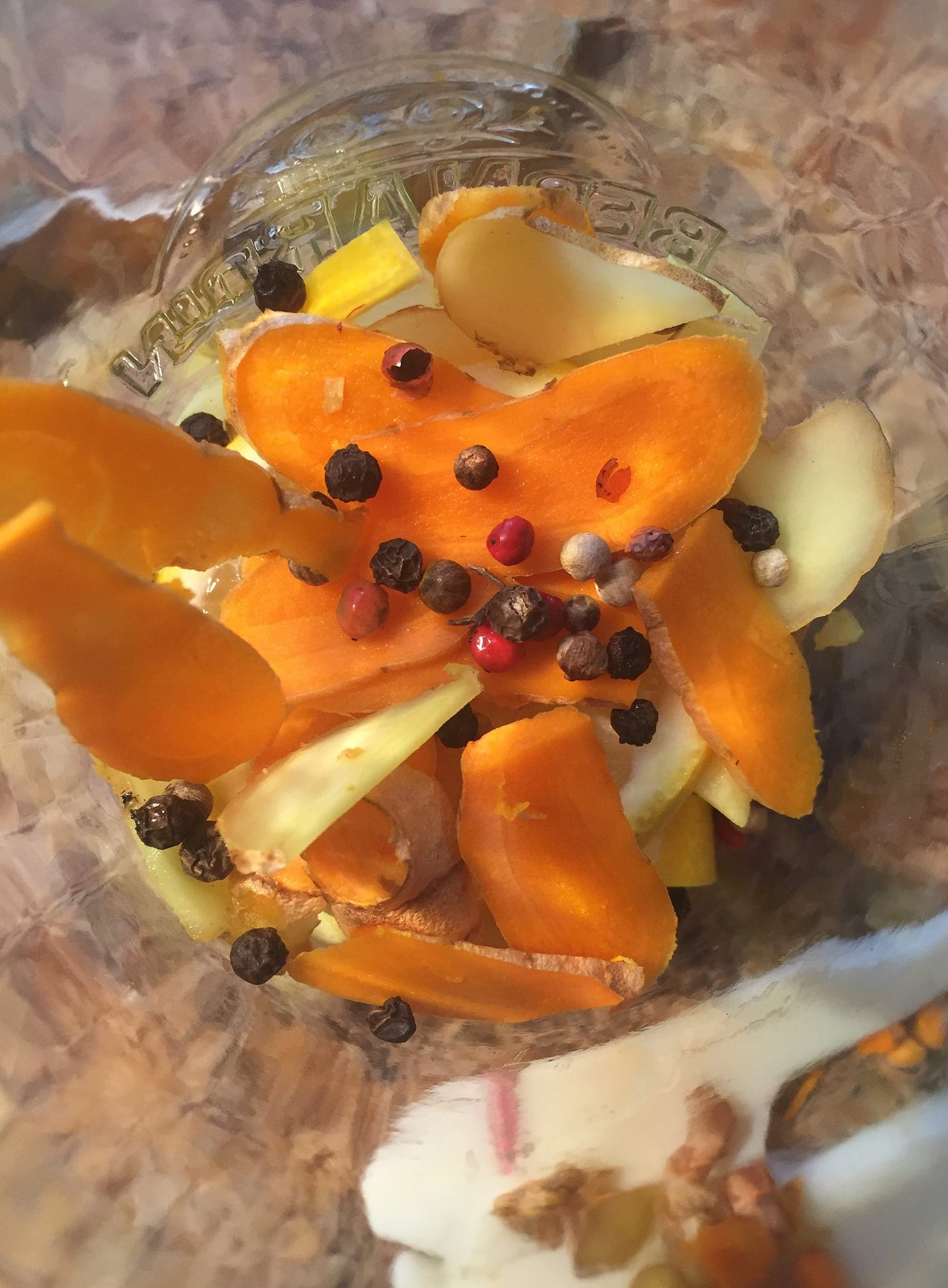
Last but not least something we enjoy almost everyday, Ginger tea! :)
Here is an old video I made that shows how we make our typical ginger tea (the part about making the tea starts at about time index 10:35 in the video):
Full recipes for the creations shown in the pics above will be included in my upcoming book Recipes For Reciprocity.
The following are some pics of one of several recipes I have been working on perfecting that fall into the realm of potent synergistic natural medicines. I will be including the full recipes for these in a future (yet to be titled) publication.
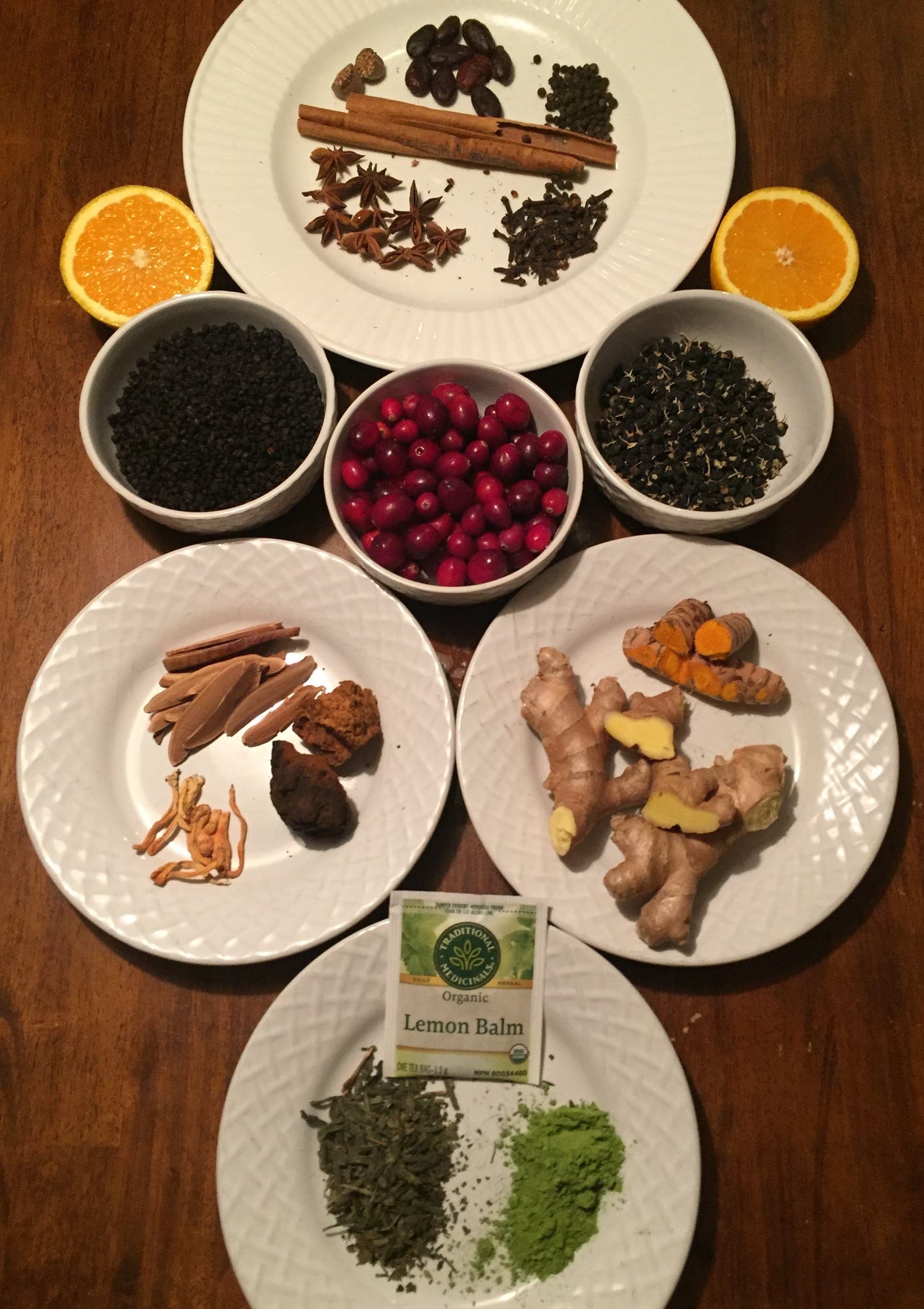
Each step we take to boycott big pharma and embrace Mother Earth's medicine cabinet is a conscious choice to move into health sovereignty and realign our creative energy with the regenerative capacity of the living planet.
I hope this article inspires you to grow some of your own ginger at home so you can have access to this powerful medicinal superfood when ever you need it.
I am wishing you all longevity, resilience and health sovereignty.



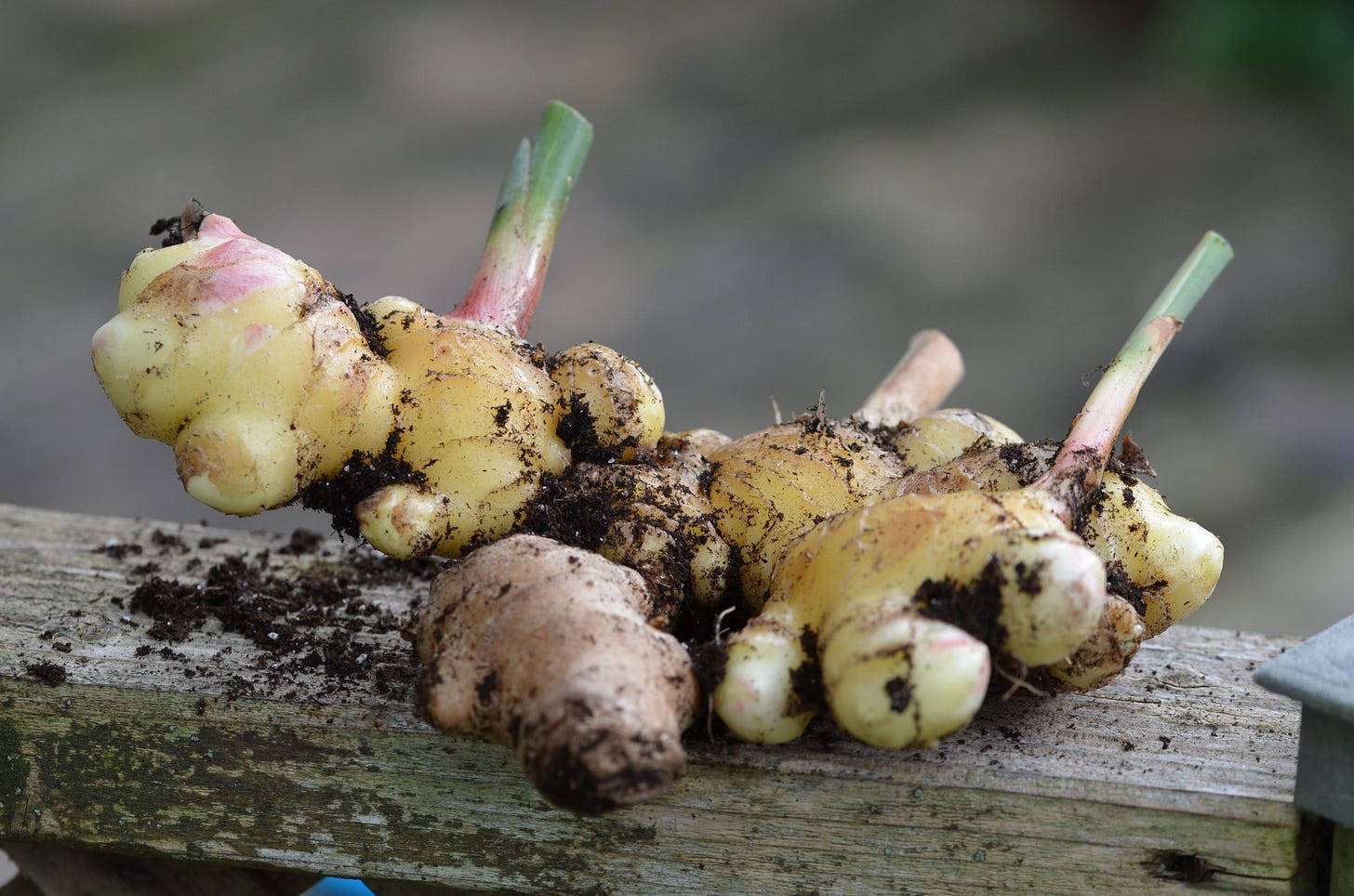
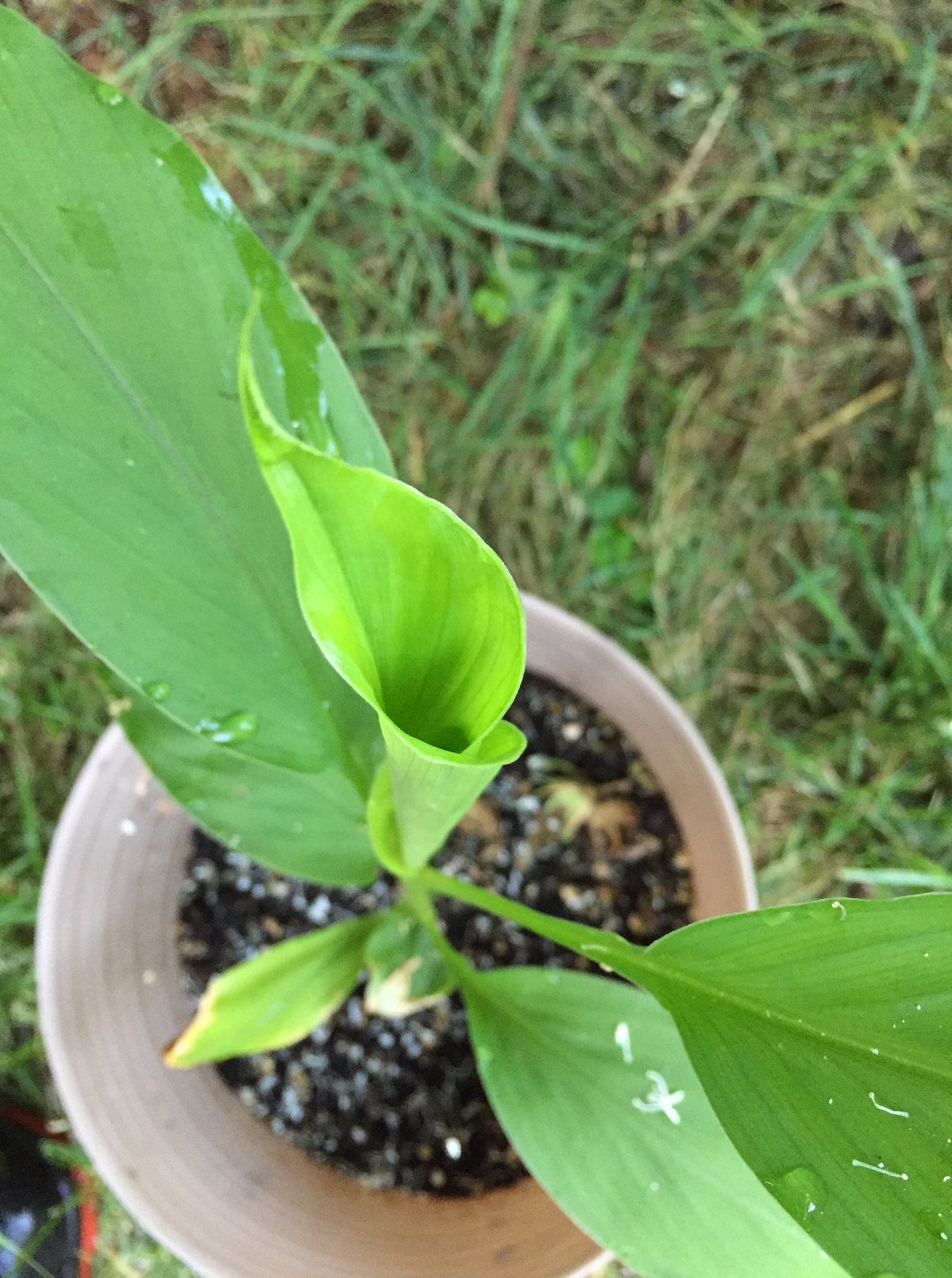
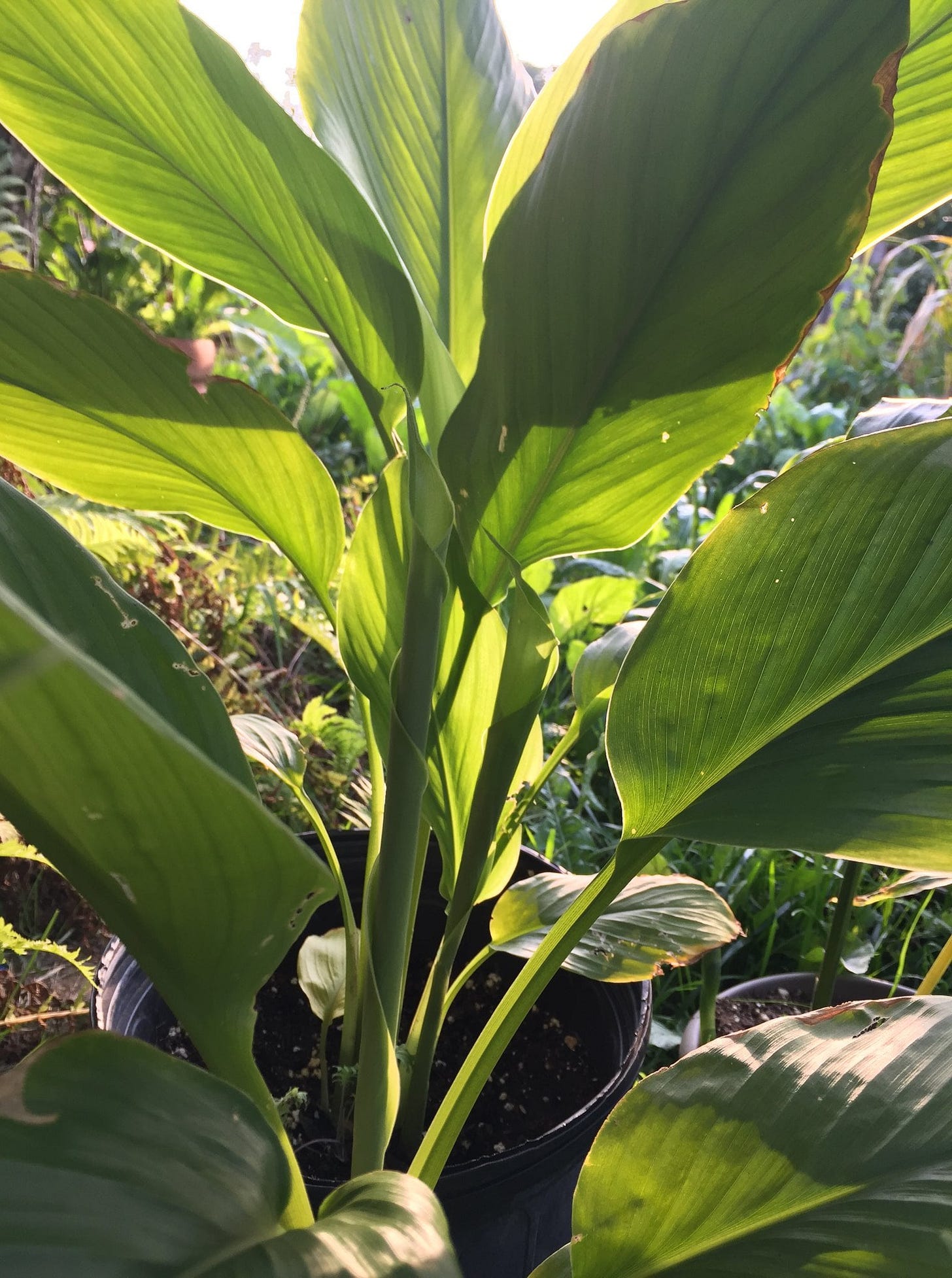
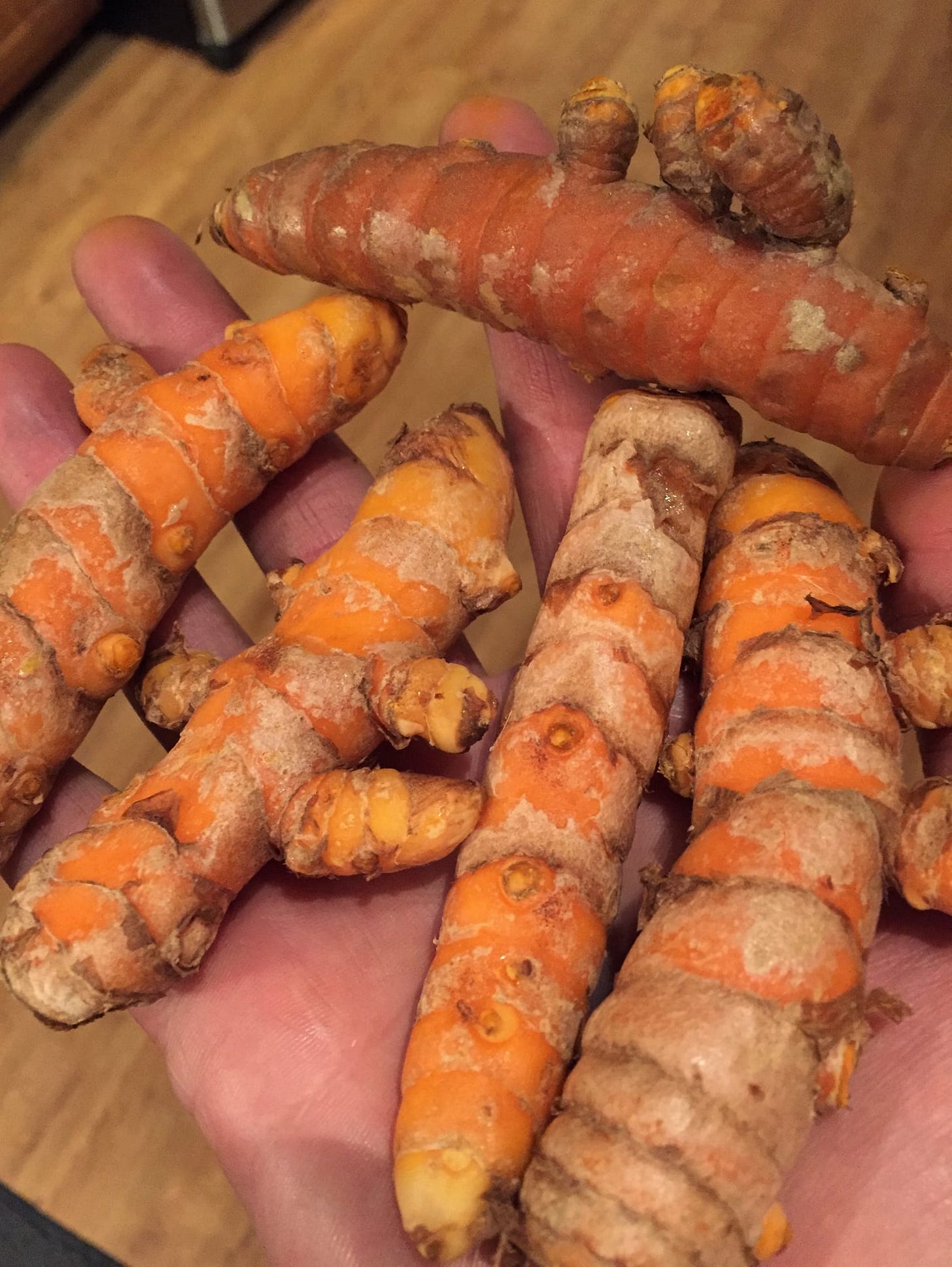

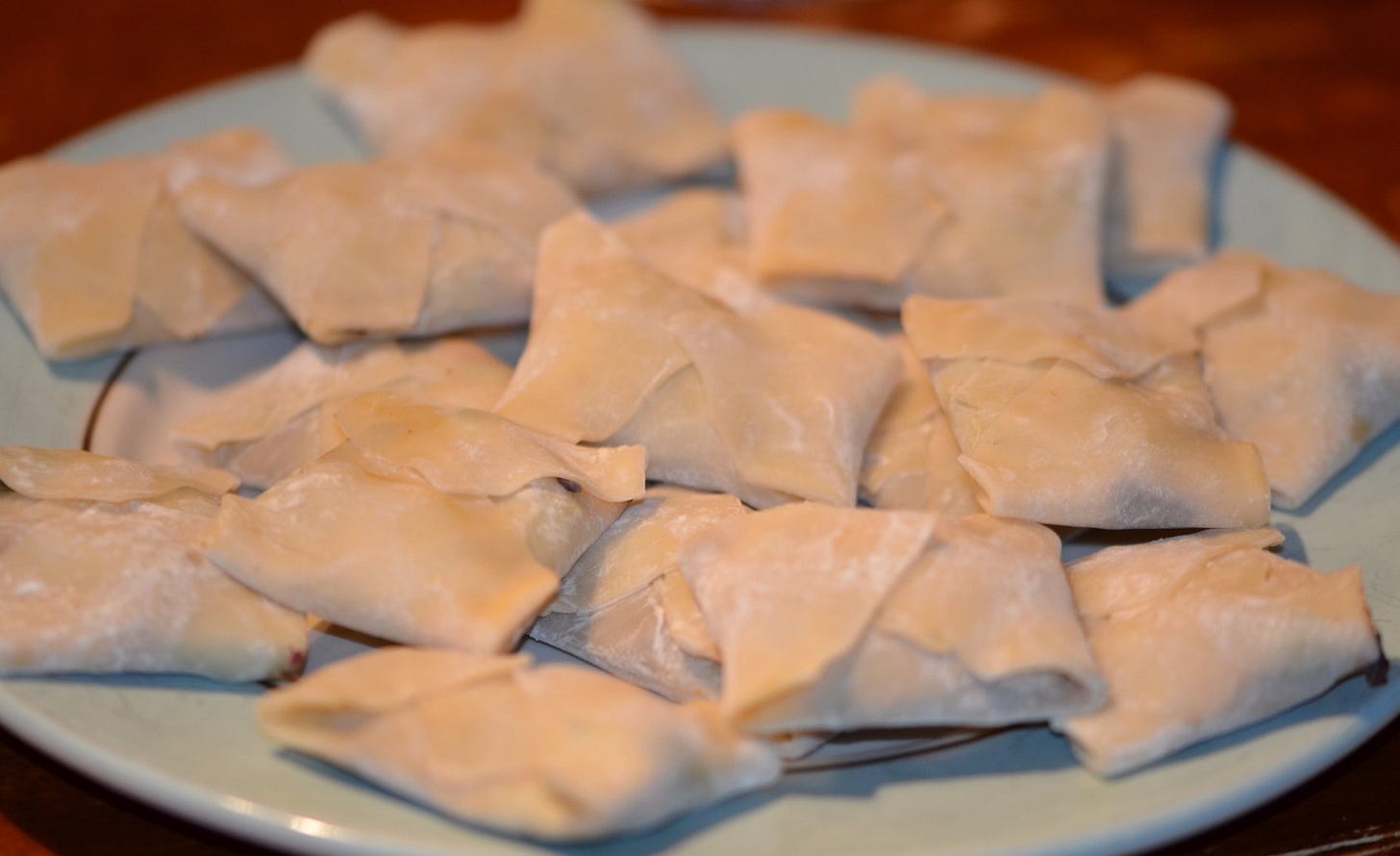
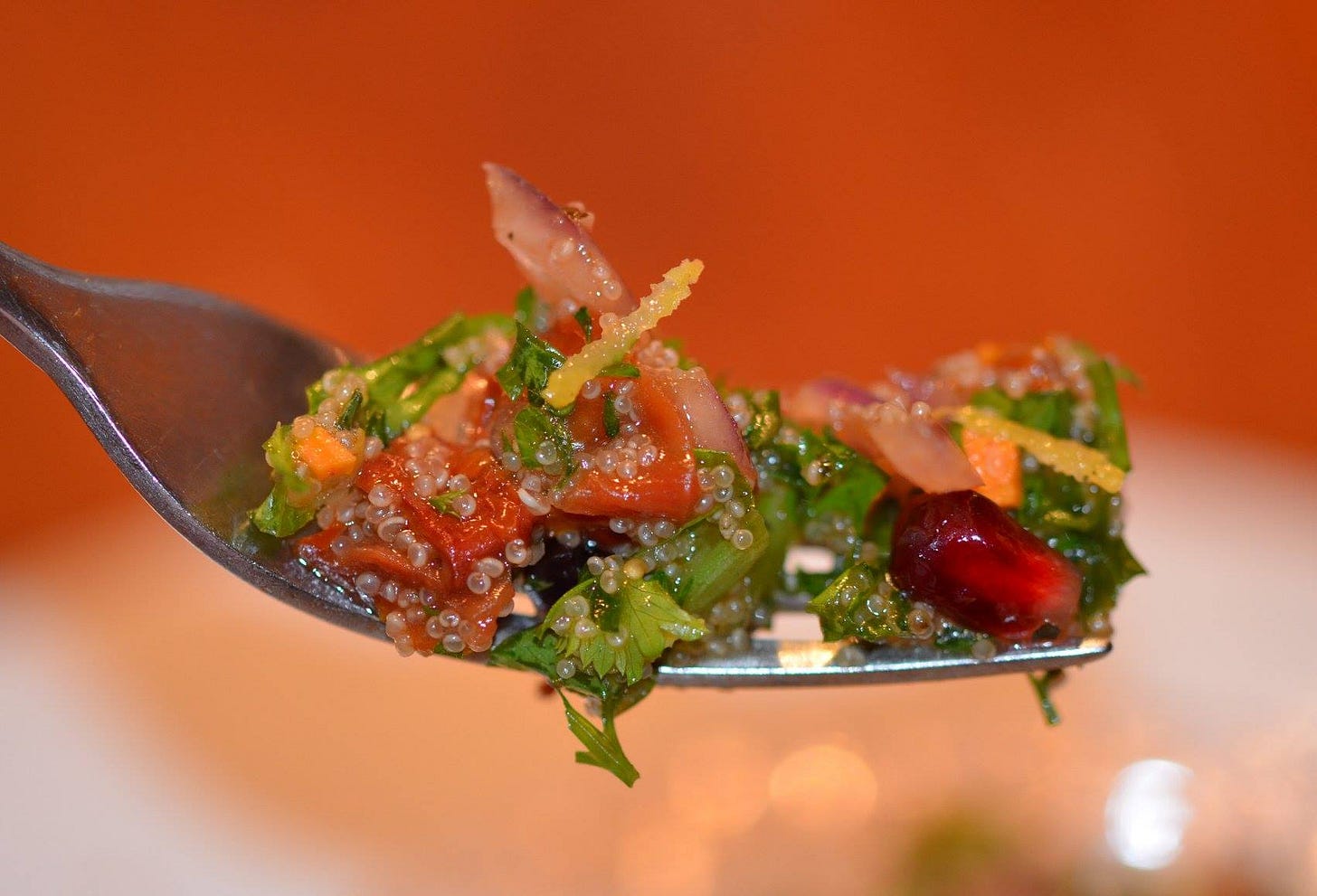
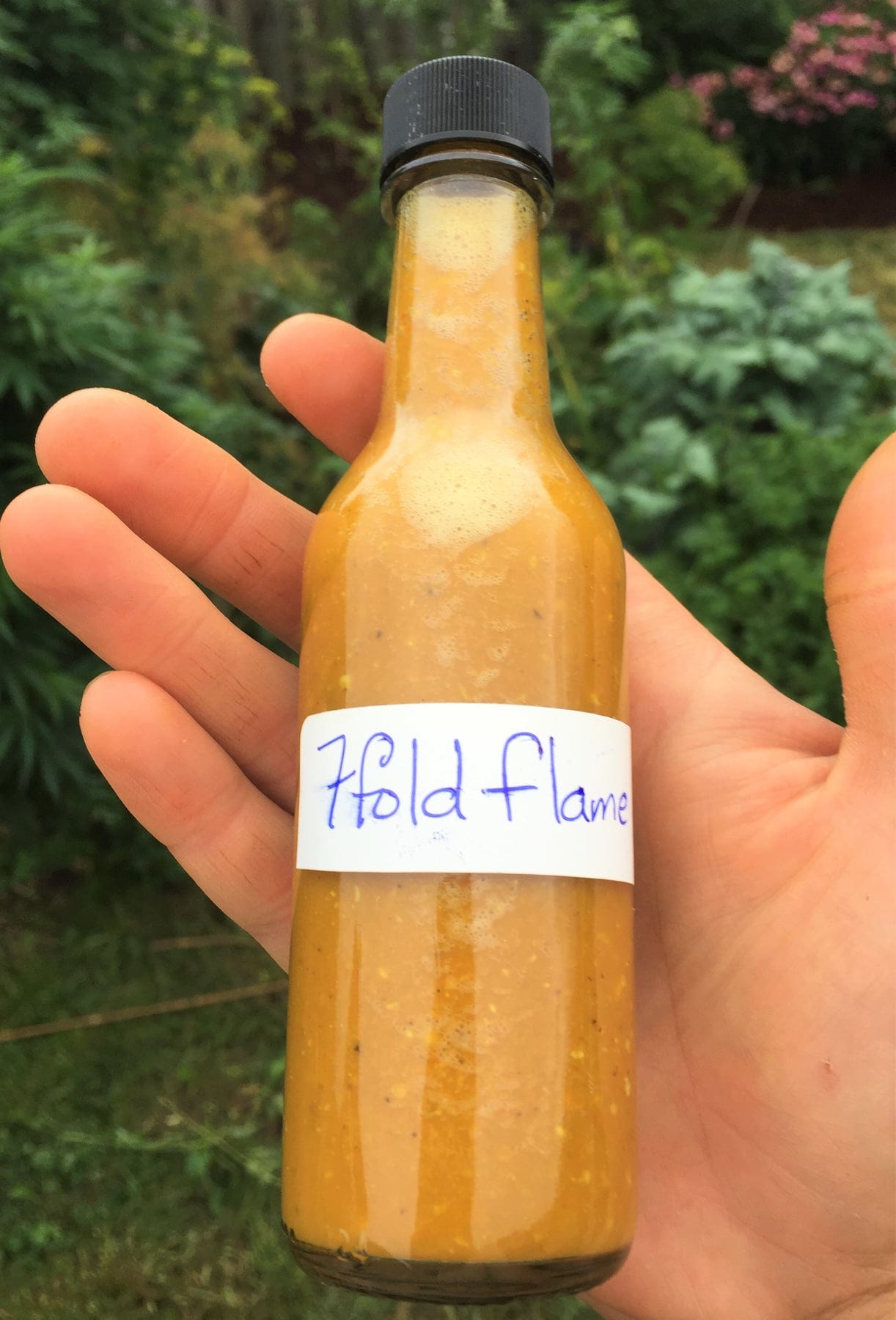
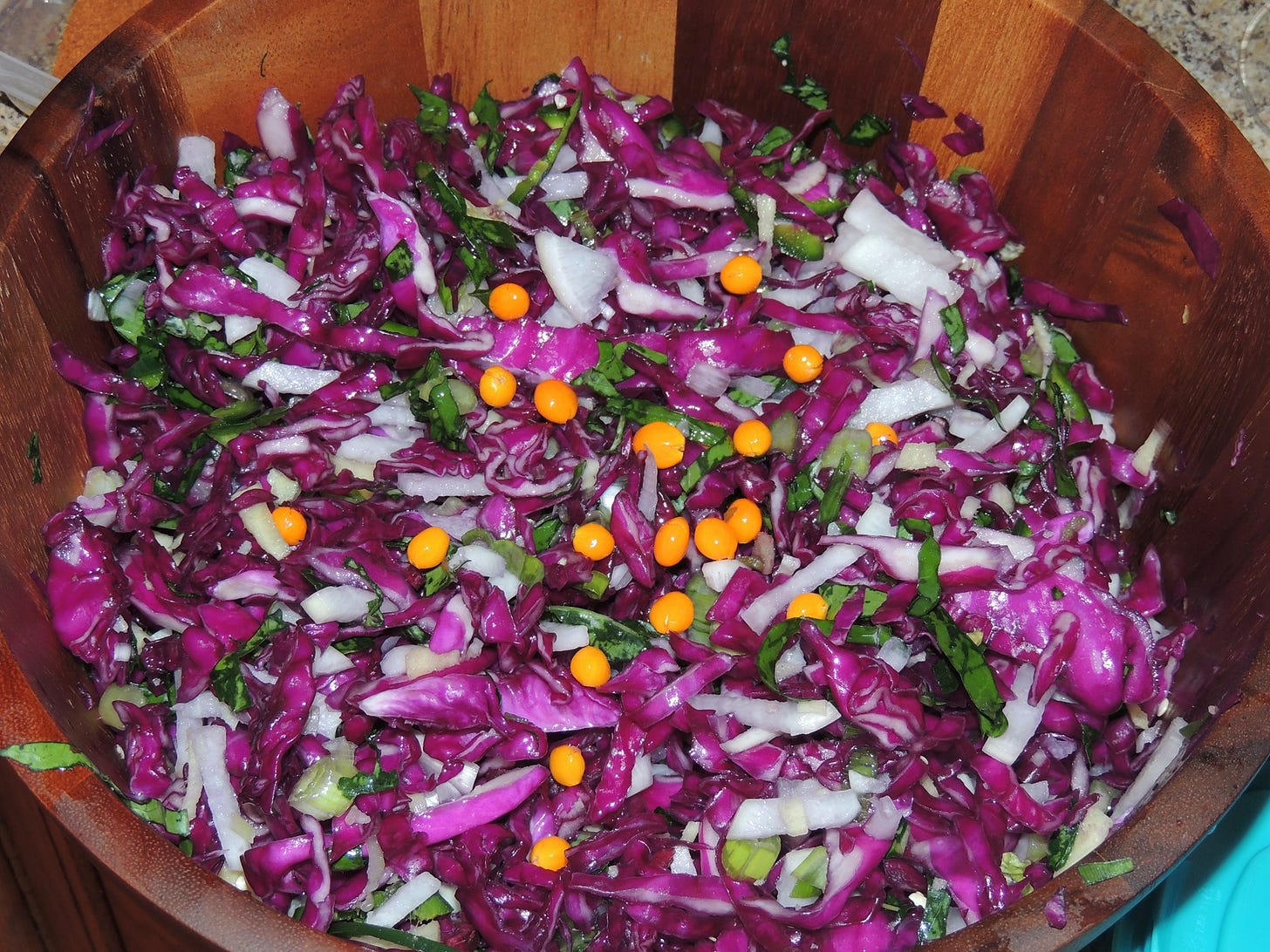
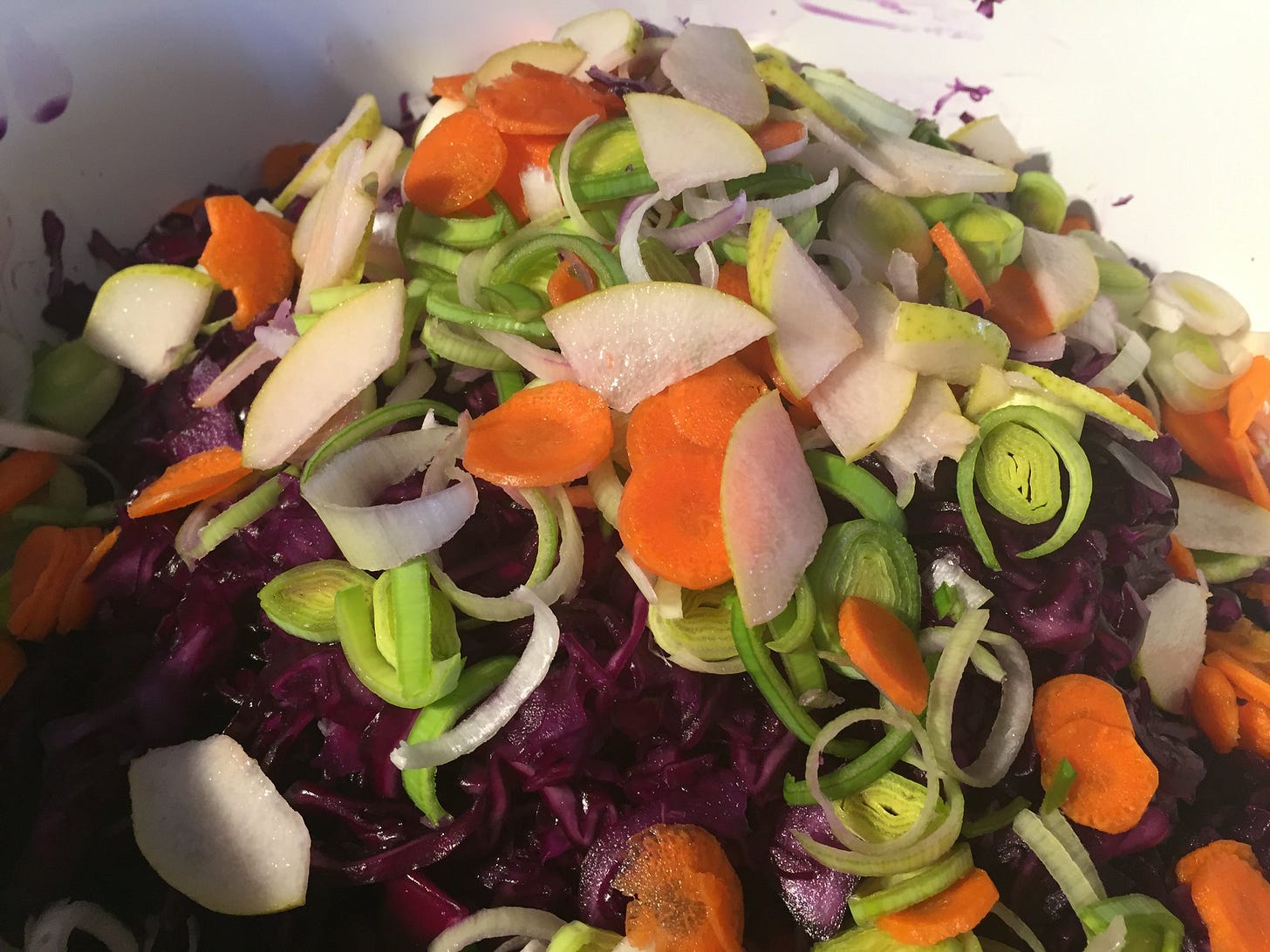
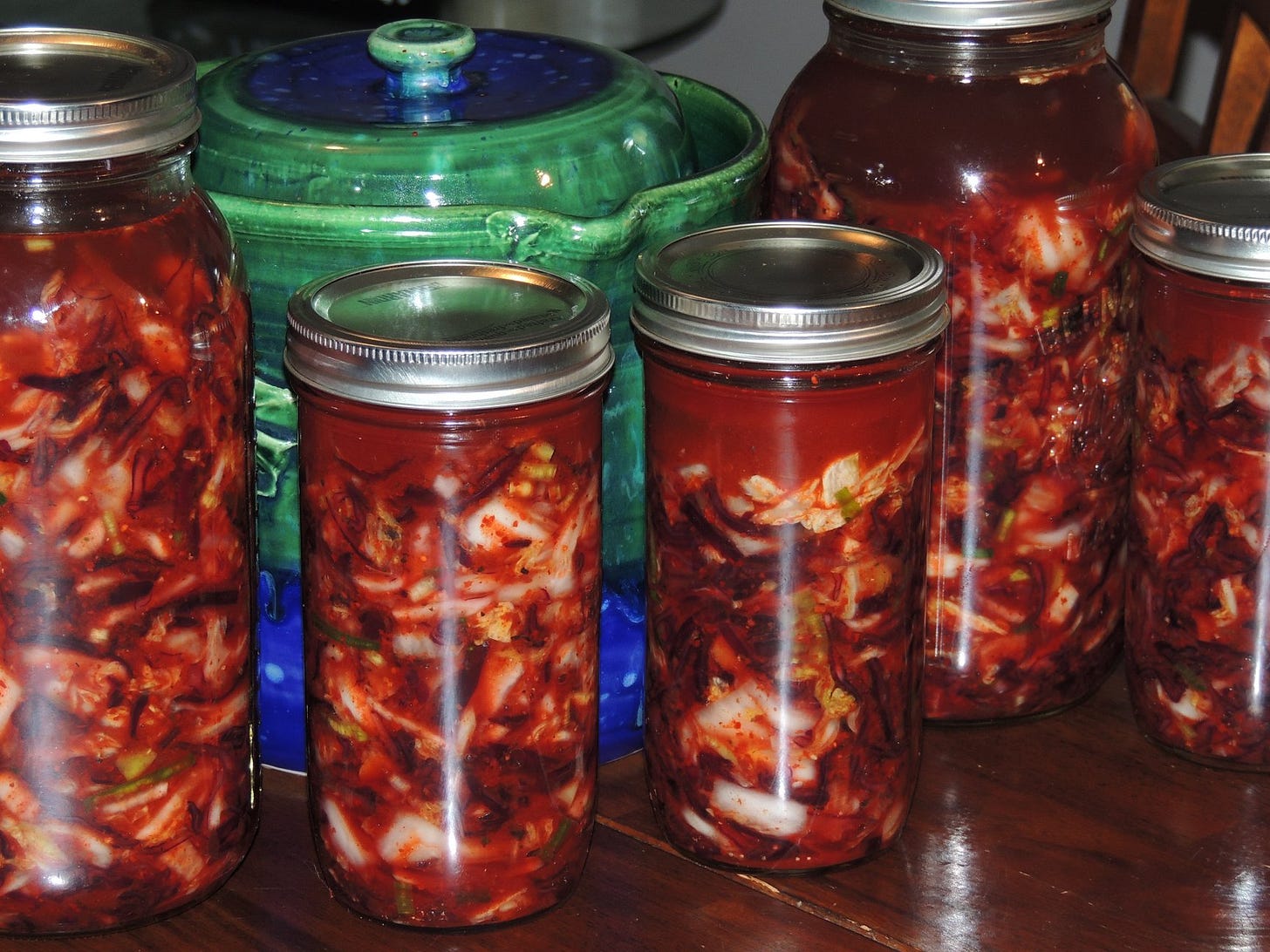
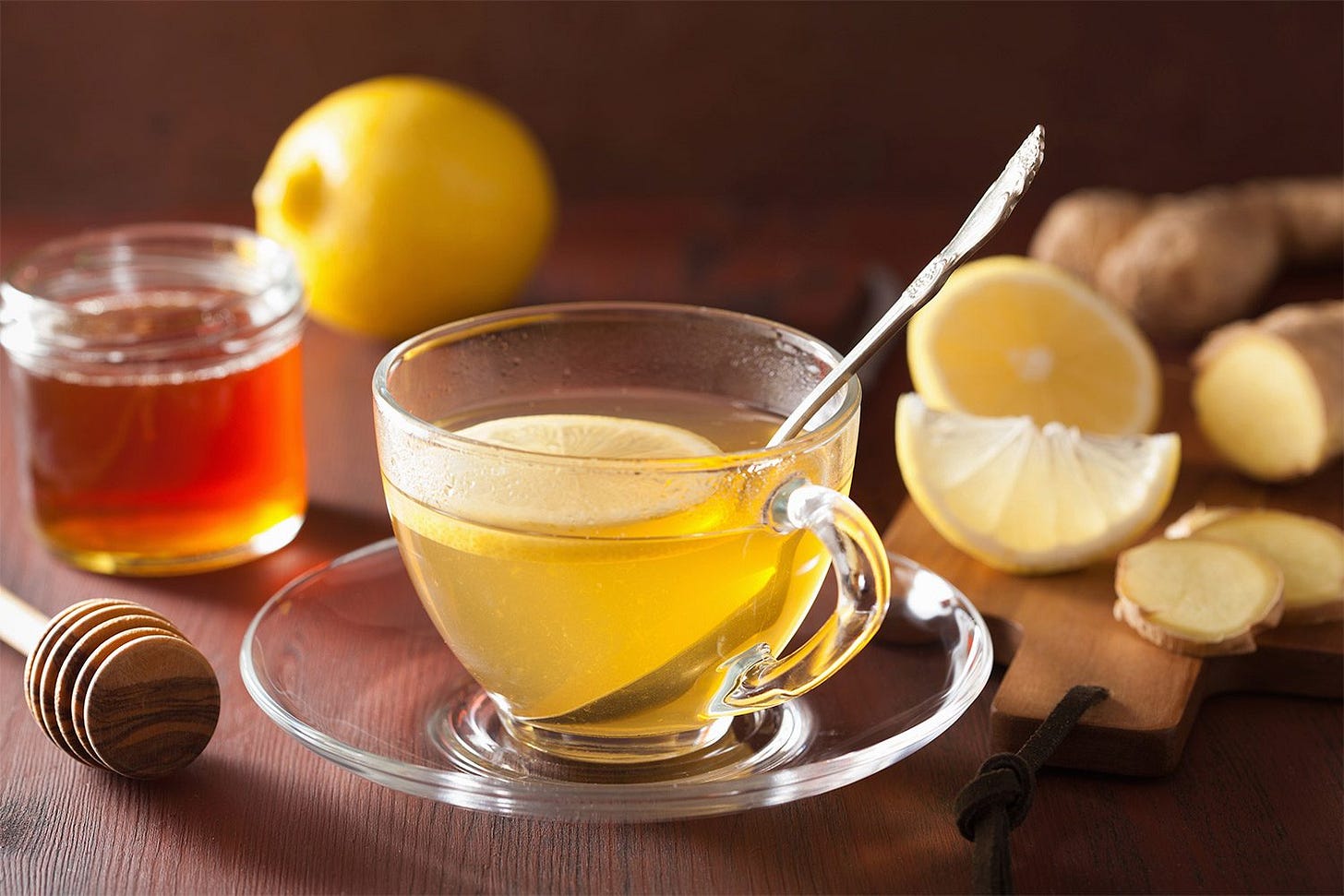
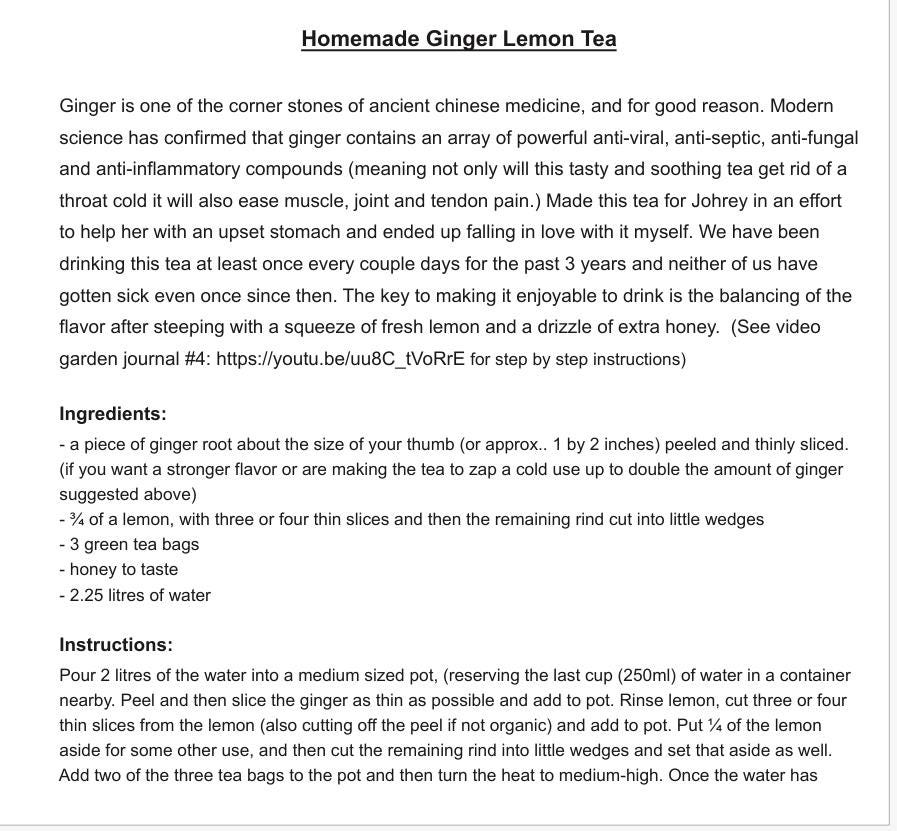

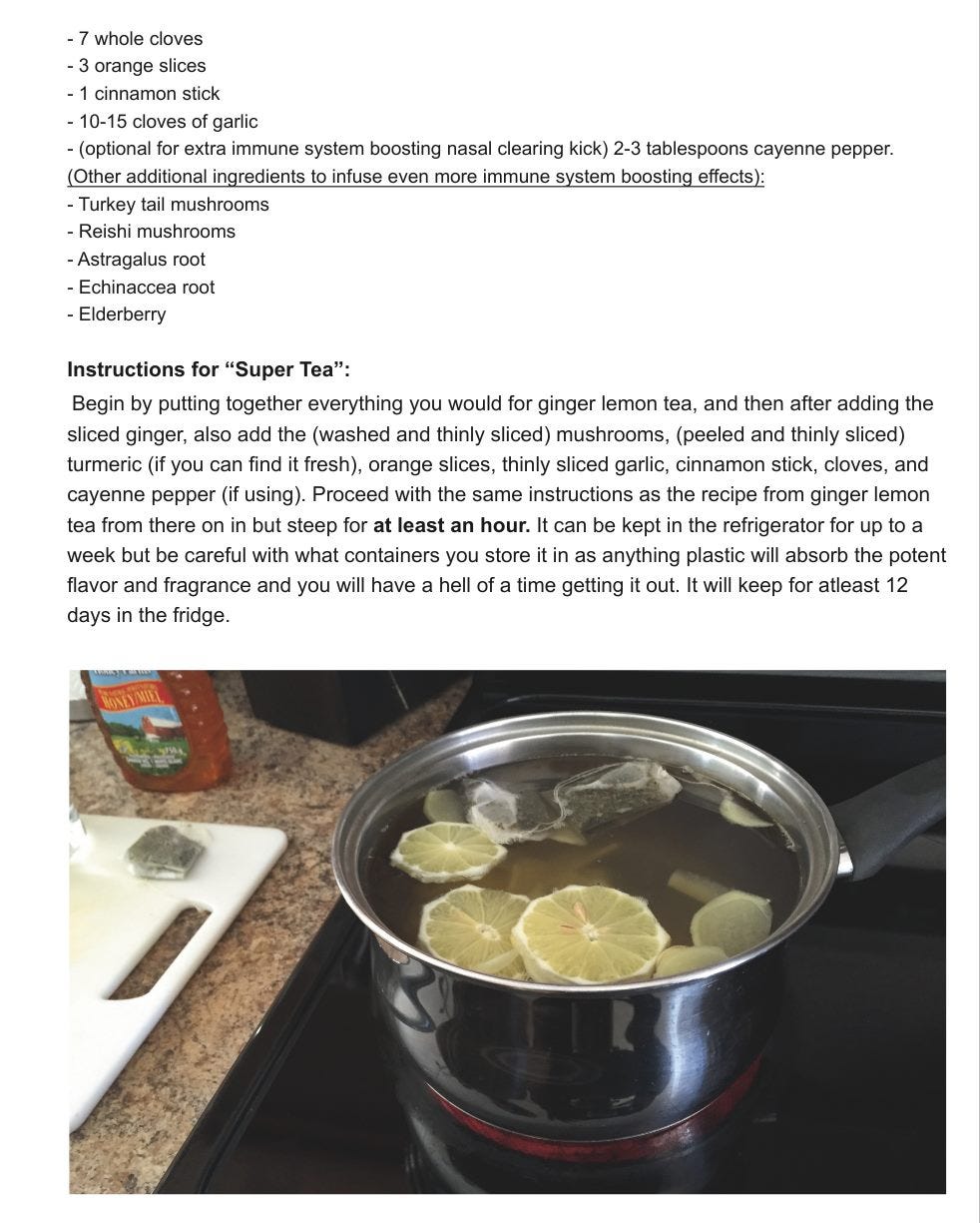

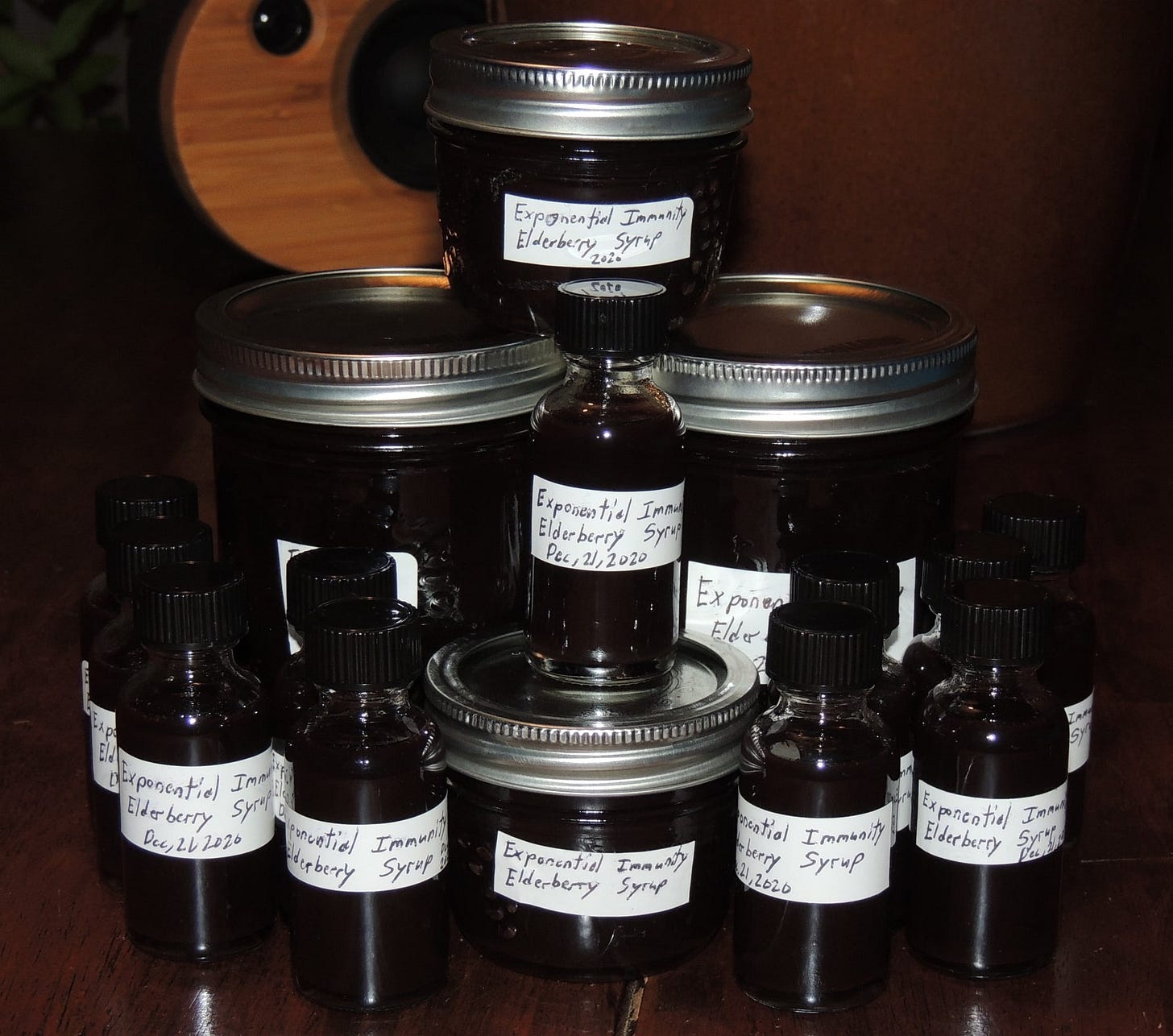
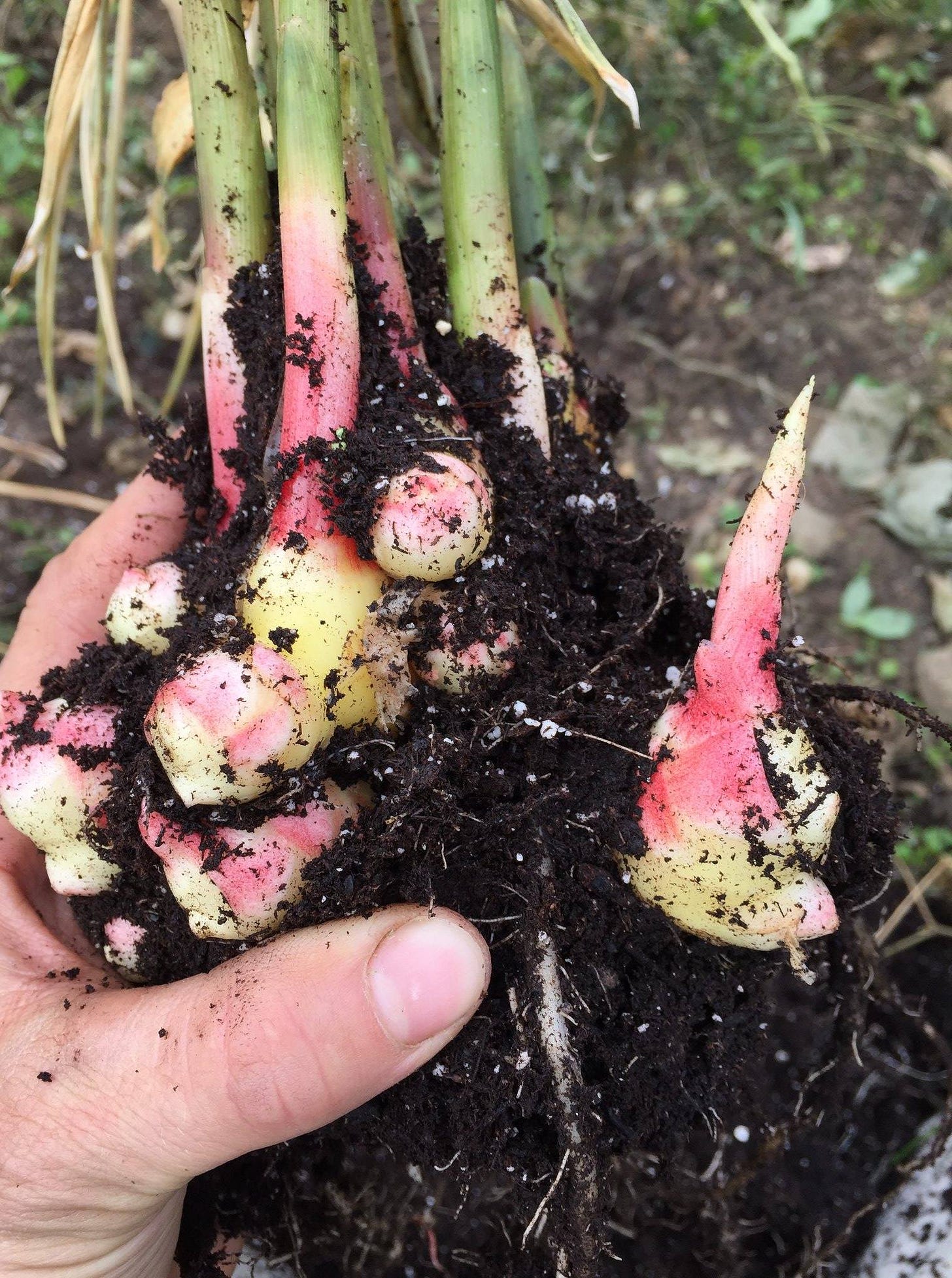
I’m convinced. :) I will try again this coming year.
I have a cousin who lives in Ecuador. He and his wife harvested two buckets of turmeric the day before yesterday. The first load is dried and ground - two cups. They also harvested some ginger. They grow both in abundance. Way more than they can use. They have given me some when they’re back in the States a couple times. :)
wow how beautiful and healing ginger is! ♥️ , I love it, and what beautiful food, pictures and wisdom 🙏🏽
thank you 🐒